GENSLER DESIGN FORECAST 2021
THE PANDEMIC IS STRAINING PEOPLE’S RELATIONSHIPS WITH THEIR CITIES. ROUGHLY TWO-THIRDS OF URBAN RESIDENTS WHO WANT TO RELOCATE SAY THAT THE PANDEMIC HEALTH CRISIS HAS MADE THEM MORE LIKELY TO MOVE. —GENSLER CITY PULSE SURVEY 2020
This issue of Design Forecast offers a comprehensive and timely assessment of the critical challenges and profound opportunities the world are now facing. The events of the past year, and not least among them the COVID-19 pandemic, have resulted in serious disruption and uncertainty across all industries. Gensler’s Design Forecast harnesses the collective expertise of our 5,500+ team members, networked across 50 offices around the world. With global scale and local roots, Gensler’s thought leadership delivers unparalleled insight, influence, and impact.
RECONNECT focuses on five key drivers behind reentry and recovery:(1) The desire for people to reconnect (2) The opportunity to reimagine the future of cities (3) A renewed commitment to climate action (4) The importance of the human experience (5) Redefining places and spaces in the post-COVID world.
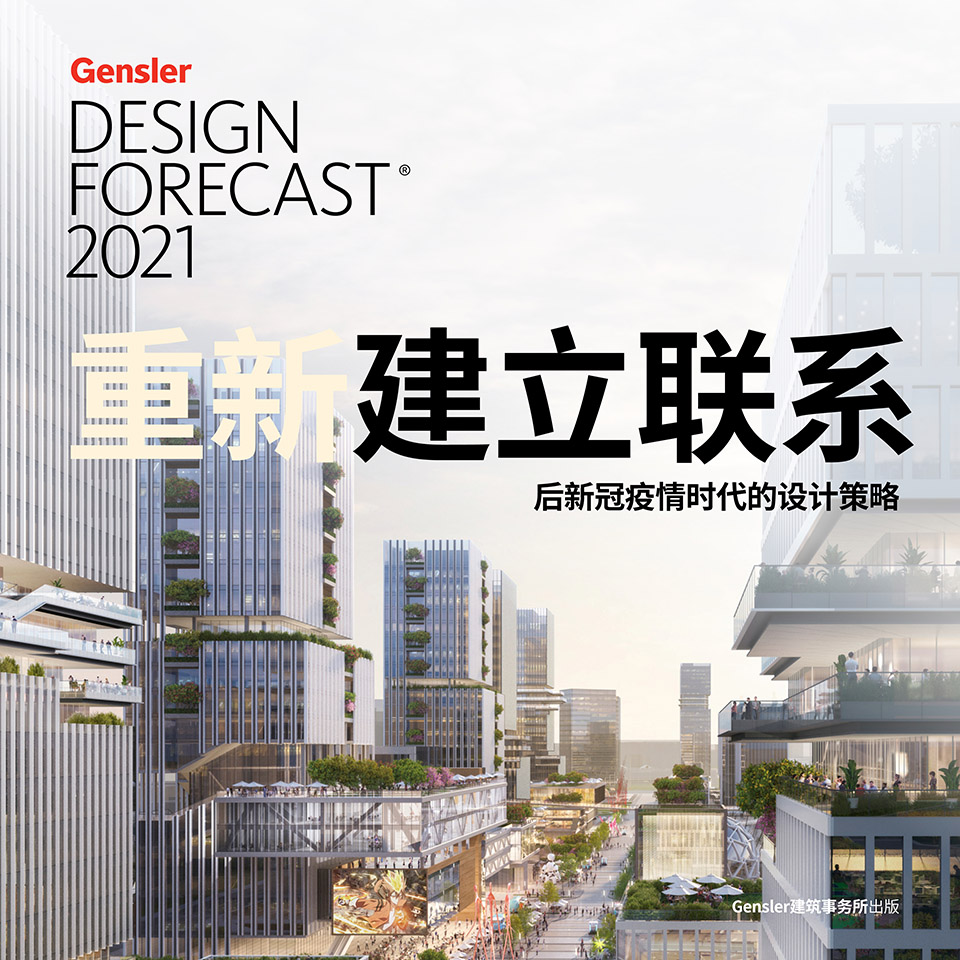
REIMAGINING THE FUTURE OF WORK
WORK The pandemic has triggered a massive shift in global work patterns. We’ve learned new behaviors, adopted new technologies, and adjusted to new ways of working. We’ve also come to a deeper understanding of the fundamental role of place in how we work, especially how we work together. Organizations around the world are rethinking the future of the workplace based on experiences and learnings from the past year, with a particular focus on the well-being and connectivity of their teams. Collectively, we are reimagining the future of work on a global scale, with the physical office continuing to play a central role in creating more connected, equitable experiences that benefit people, organizations, and their surrounding communities.
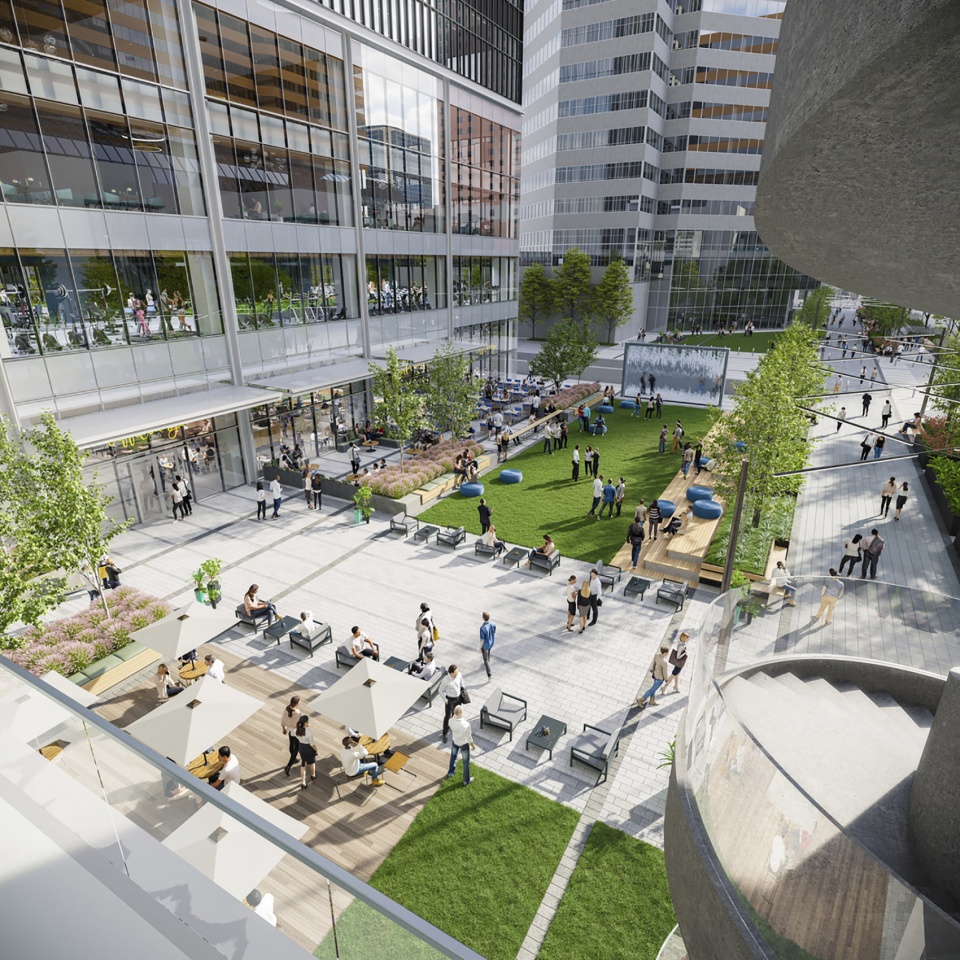
4 INSIGHTS THAT ARE DEFINING THE NEW WORKPLACE
THE ROLES OF THE WORKPLACE AND OFFICE BUILDINGS ARE EVOLVING
Work and place have become uncoupled, redefining the office as the best place to bring people together — especially for those whose jobs rely on in-person collaboration or specific spaces or shared resources. Physical and virtual experiences must be fully integrated since digital systems will continue to shape a seamless level of connectivity and personalization.
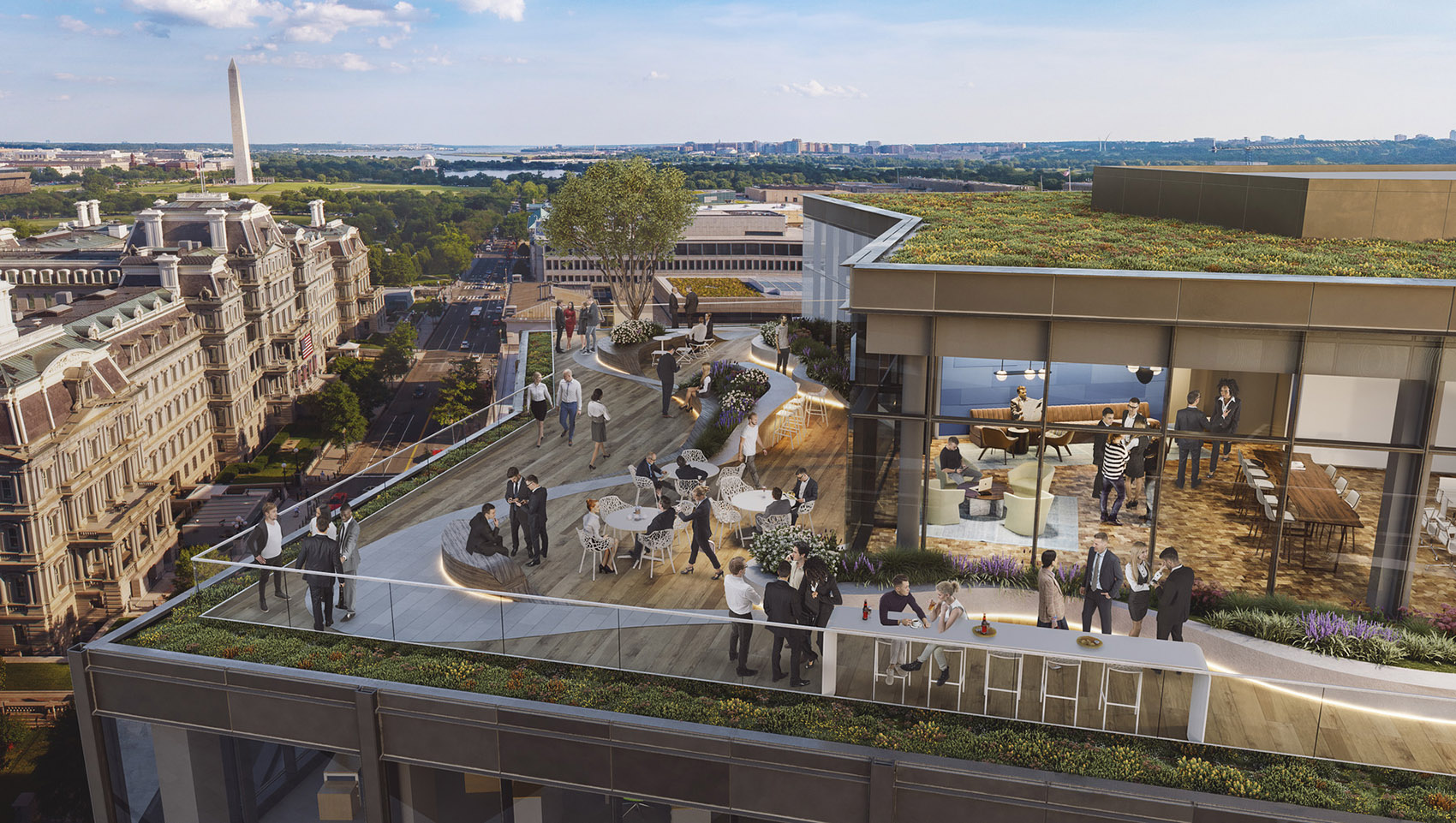
CULTURE, COMMUNITY, AND COLLABORATION ARE AT THE CORE OF THE NEW WORK EXPERIENCE.
The fundamental role the office is shifting to become a place that brings people together to collaborate, to build personal and professional relationships, and to connect with a company’s unique business, mission, and purpose. New behaviors, technology, and policies will be required to allow flexible and virtual work to thrive, while also supporting coaching and mentoring and more equitable and inclusive experiences.
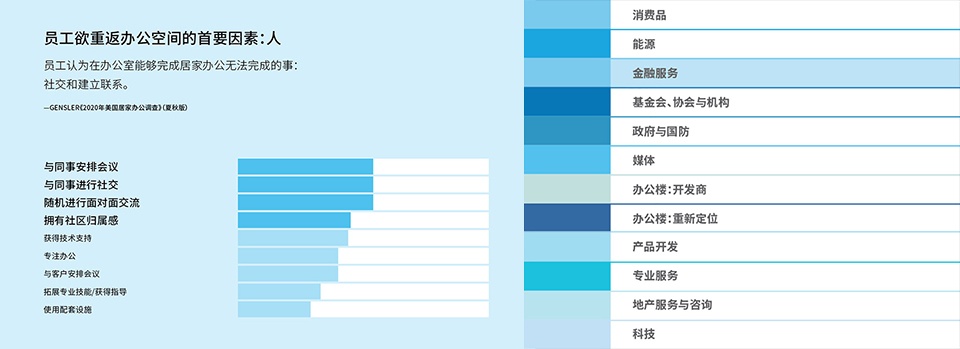
PRE-PANDEMIC TRENDS ARE ACCELERATING
Choice, autonomy, health, and well-being have become paramount for individuals and teams to perform at their best. From health checks and touchless security to improved air quality systems, owners and users are focused on healthy buildings and experiences. Outdoor spaces are increasingly becoming part of the workplace environment, with open façades and retrofitted rooftops providing additional work settings.

FLEXIBILITY AND ADAPTABILITY ARE CRITICAL FOR A HYBRID WORKFORCE
A new hybrid workforce, working both at the office and remotely, is an opportunity to fix the pre-pandemic issues of the workplace, and to explore new real estate strategies. Office buildings will increasingly get smarter to enable office-to-home connectivity and anticipate evolving tenant needs. New workspace approaches must be more responsive to rapidly adjust to new ways of working with flexible spaces and furniture for newly emerging work patterns.
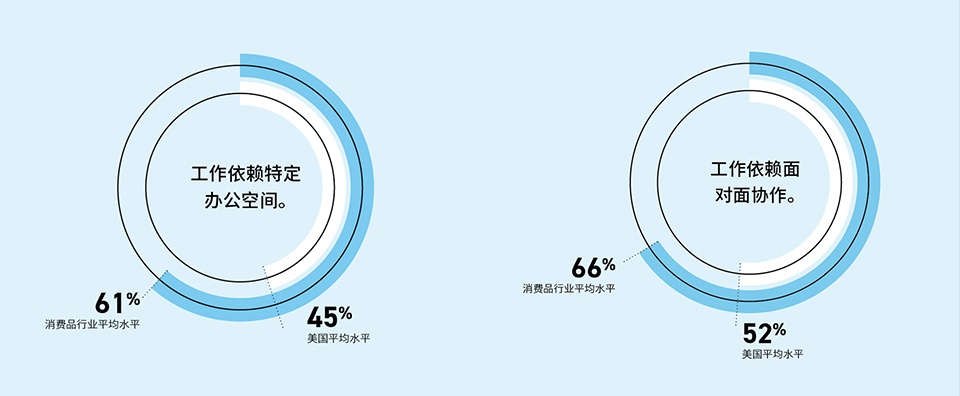
FINANCIAL SERVICES FIRMS
Many financial services companies have thrived working — and even trading — from home. Now, for the first time, they are embracing the idea of remote work in pursuit of a deeper, richer workplace experience. The design of new work environments should balance technology with irreplaceable human connection; the right mix will prove transformative.
WORKPLACE MOBILITY
WORKPLACE MOBILITY IS AN OPPORTUNITY
Changes brought by the pandemic will endure for the business value that they have unlocked; workplace mobility is one of them. After seeing the benefits of remote-work programs, financial services companies are boldly redefining the office as a destination. Dedicated individual space is giving way to new and varied multi-use space types to drive employee connection, spark innovation, and embrace flexibility. As clients and customers face ongoing financial anxiety, the ability to foster intimate human connections will differentiate the most successful companies.
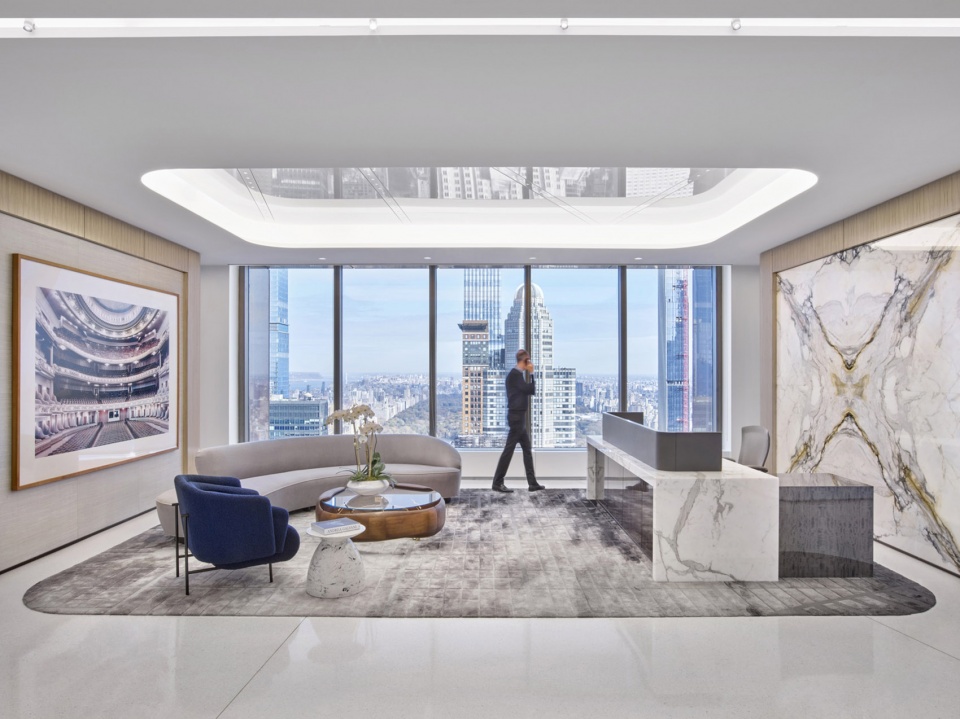
THE HYBRID OFFICE
THE HYBRID OFFICE PRESENTS OPPORTUNITIES TO MAXIMIZE PERFORMANCE
Financial workers have emerged from the pandemic with new ways of working and utilizing technologies. These new practices must be embraced in the workplace itself to facilitate ongoing hybrid working and to support an even higher-performing workforce than had existed before. Increased flexibility and opportunity for local community presence come as banks reconsider networks of private wealth management offices, retail branches, and business continuity sites as alternative workplaces.
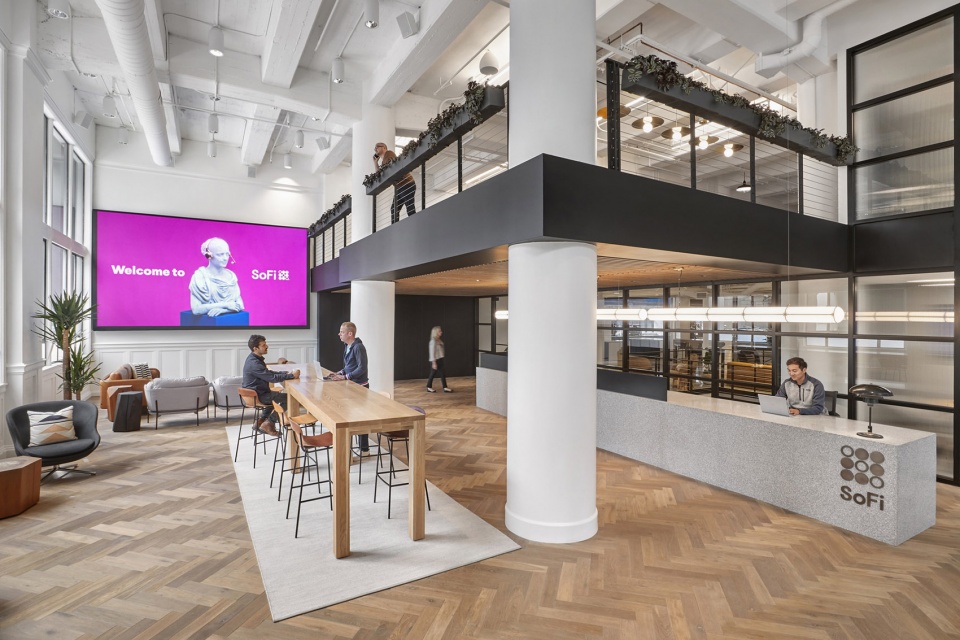
PROMOTING EQUITY
NEW SPACE TYPES CAN AND SHOULD PROMOTE EQUITY
Hospitality-inspired, welcoming workplaces generate a sense of belonging, safety, and engagement with the brand. As mobility for all frees up space, employers are investing in designs to support collective activities, such as learning and development, onboarding, and training. With the exploration of these new space types, financial firms have an opportunity to promote equity by assessing how supportive their physical and virtual environments are of underrepresented talent groups.
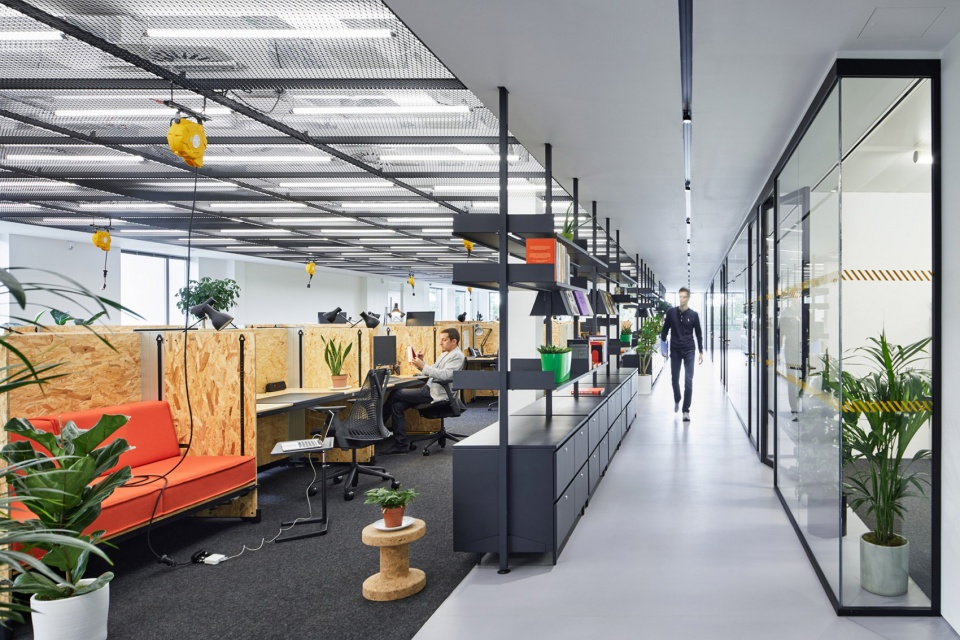
ORGANIZATIONAL INTEGRATION
ORGANIZATIONAL INTEGRATION CREATES OPPORTUNITIES FOR FIRMS TO SHARPEN STRATEGIES
One of the chief successes of bank responses to the pandemic was the alignment of real estate, facilities, HR, IT, and other departments in making decisions about workplace design and experience. Seeing an organization as an integrated system opens new possibilities. Collecting and sharing data across this system will inform better decision-making. Smart technologies are of the utmost importance in this process to support real estate and facilities teams in making occupancy decisions, especially as the roles of AI and automation grow.
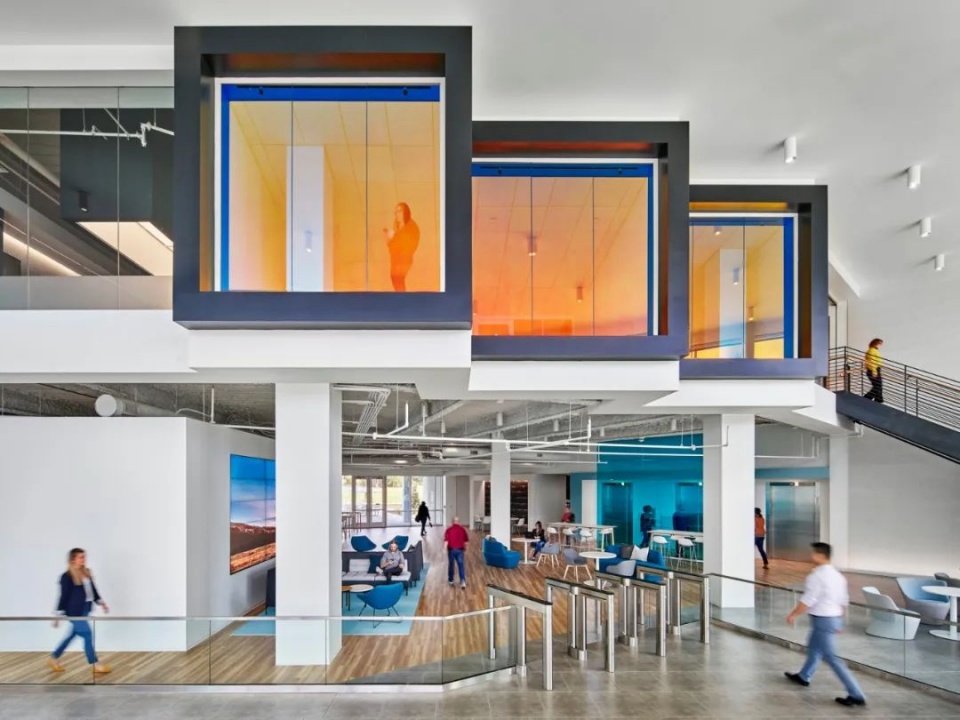
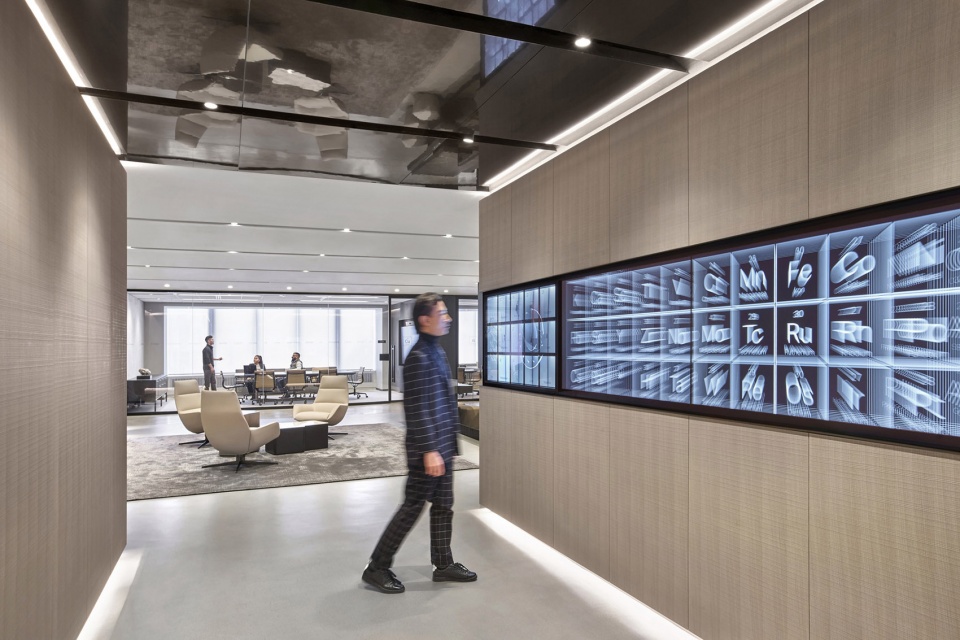
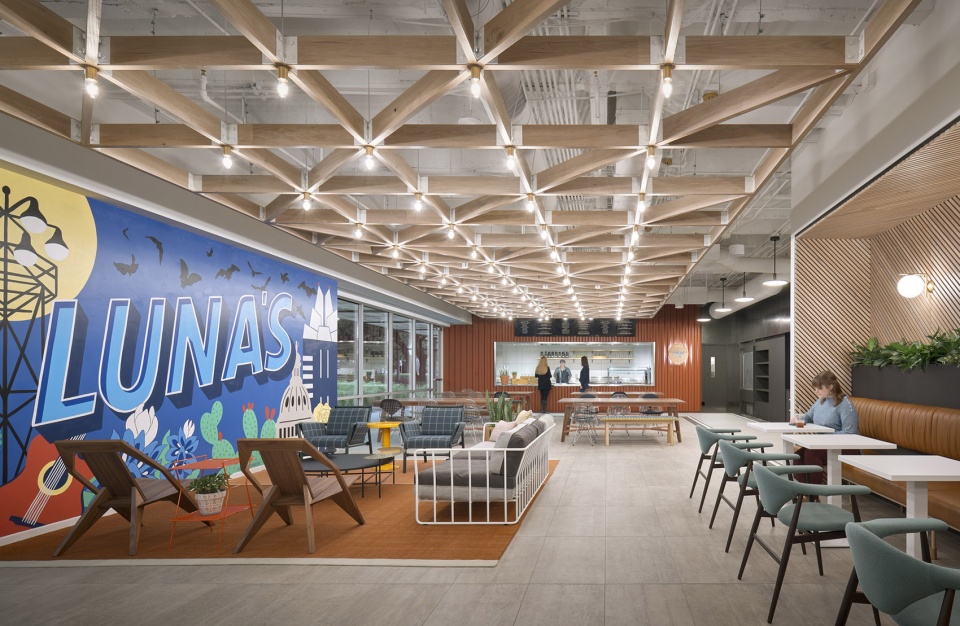
PROFESSIONAL SERVICES FIRMS
Professional services firms are transforming their offices into magnets for professionals and clients. Management advisors are implementing immersive, tailored experiences to motivate a highly mobile, multitasking workforce, while legal firms are introducing new elements to spur interaction, collaboration, and a shared sense of purpose.
HYBRID WORK
ADOPT NEW COLLABORATIVE SETTINGS FOR HYBRID WORK
The pandemic has encouraged new forms of collaboration and nontraditional working. Management advisory firms are seeing a reduction of open workstations in exchange for more collaborative settings. Firms should also implement policies and design strategies that help employees work in a new hybrid model that combines face-to-face interactions with virtual collaboration. This can extend chance encounters and informal collisions to the virtual realm.
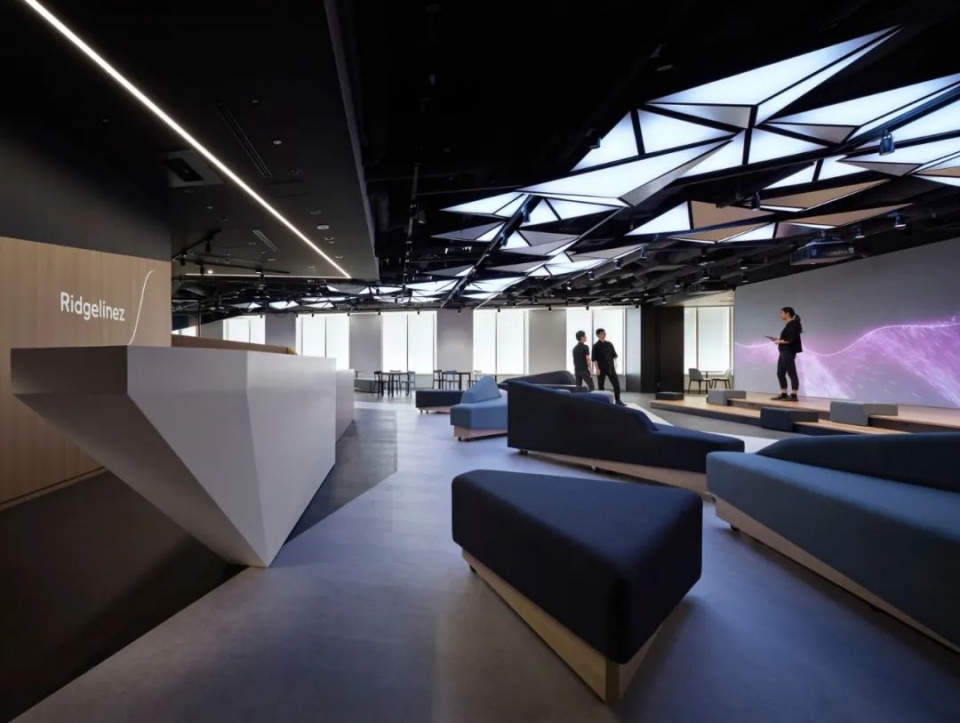
UNIVERSAL DESIGN
EMBRACE UNIVERSAL DESIGN WITH A LOCAL APPROACH
Some management advisory firms are taking a universal design approach, where a large
percentage of workplace design is globally prescriptive, but a meaningful amount is reflective of local culture and materials. Universal design makes facilities more functional for a wider range of people, recognizing that there’s no such thing as the “average” user, and creating an environment that has a collective benefit for all people who need to use it.
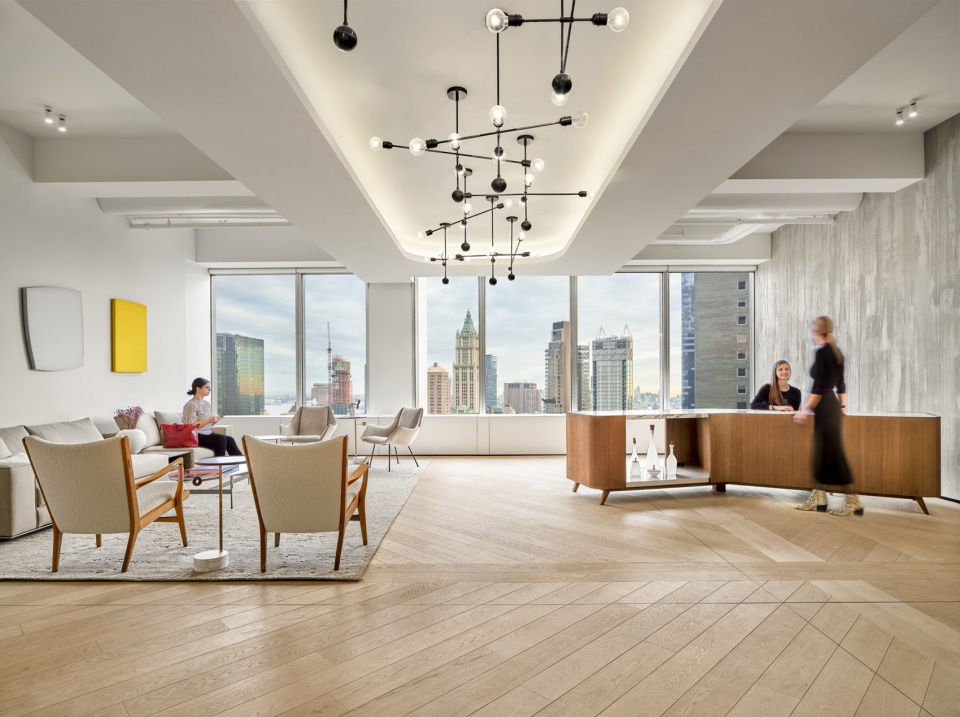
BUILT-IN FLEXIBILITY
NEW SPACE TYPES CAN AND SHOULD PROMOTE EQUITY
The COVID crisis and the shift to remote work have prompted some law firms to rethink their real estate requirements. Dynamic seating, along with flexible amenities and alternative choices like hoteling suites, is an emerging paradigm that can help some firms achieve significant space savings. Recognizing that lawyers can be engaged and productive no matter where they are, the industry has an opportunity to build a more flexible culture by making remote working a permanent part of their operations.
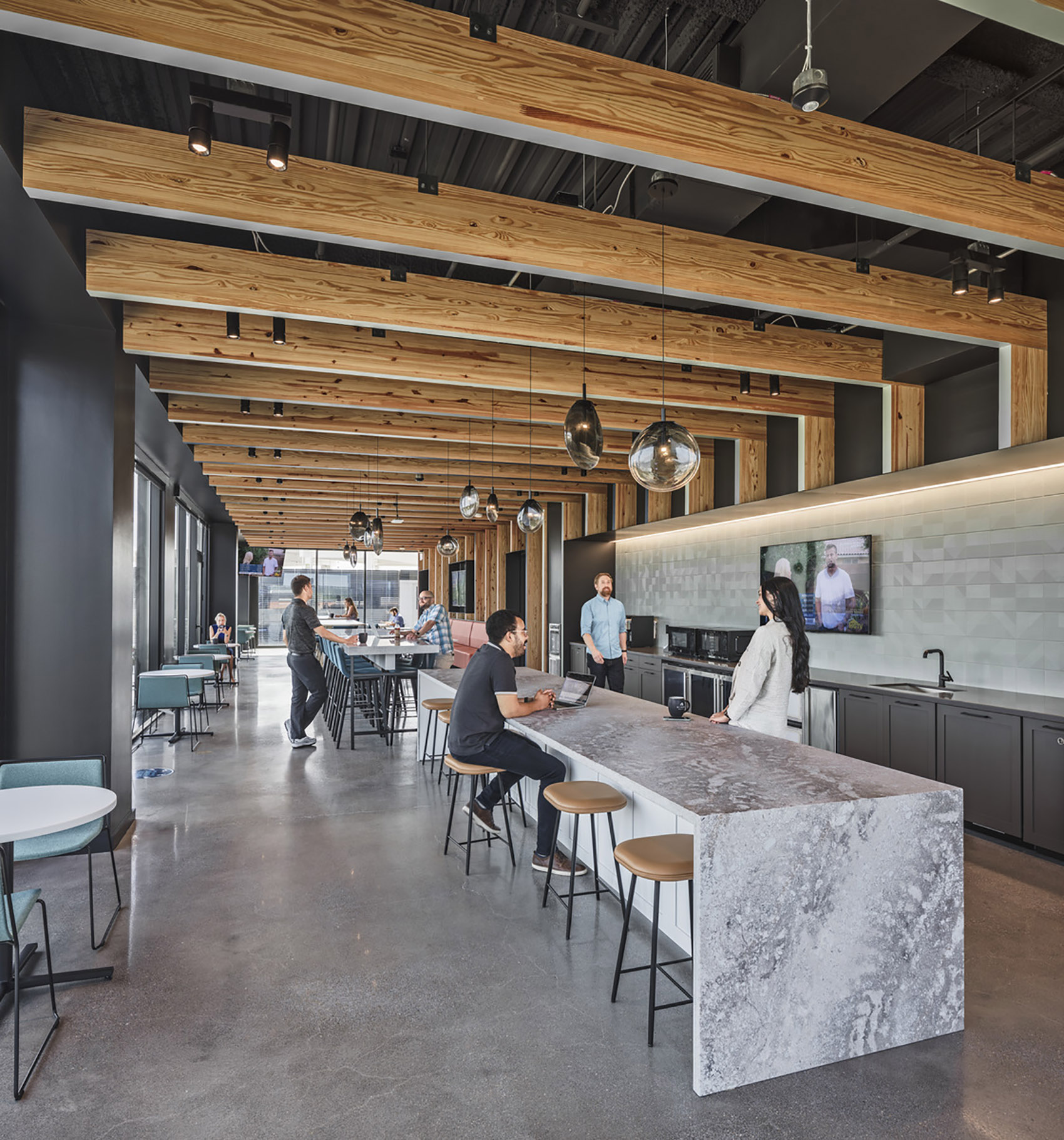
IN-OFFICE NETWORKING
NETWORKING IN THE OFFICE BECOMES EVEN MORE CRITICAL
As events and conferences resume, firms will look for new and creative ways to grow their networks, engage with their clients, and reconnect with each other. As offices reopen, the ability to host events in offices will become even more important. Firms should enlarge and enhance social spaces that can be areas of work during the day, but are reconfigurable for client and employee events for day or evening.
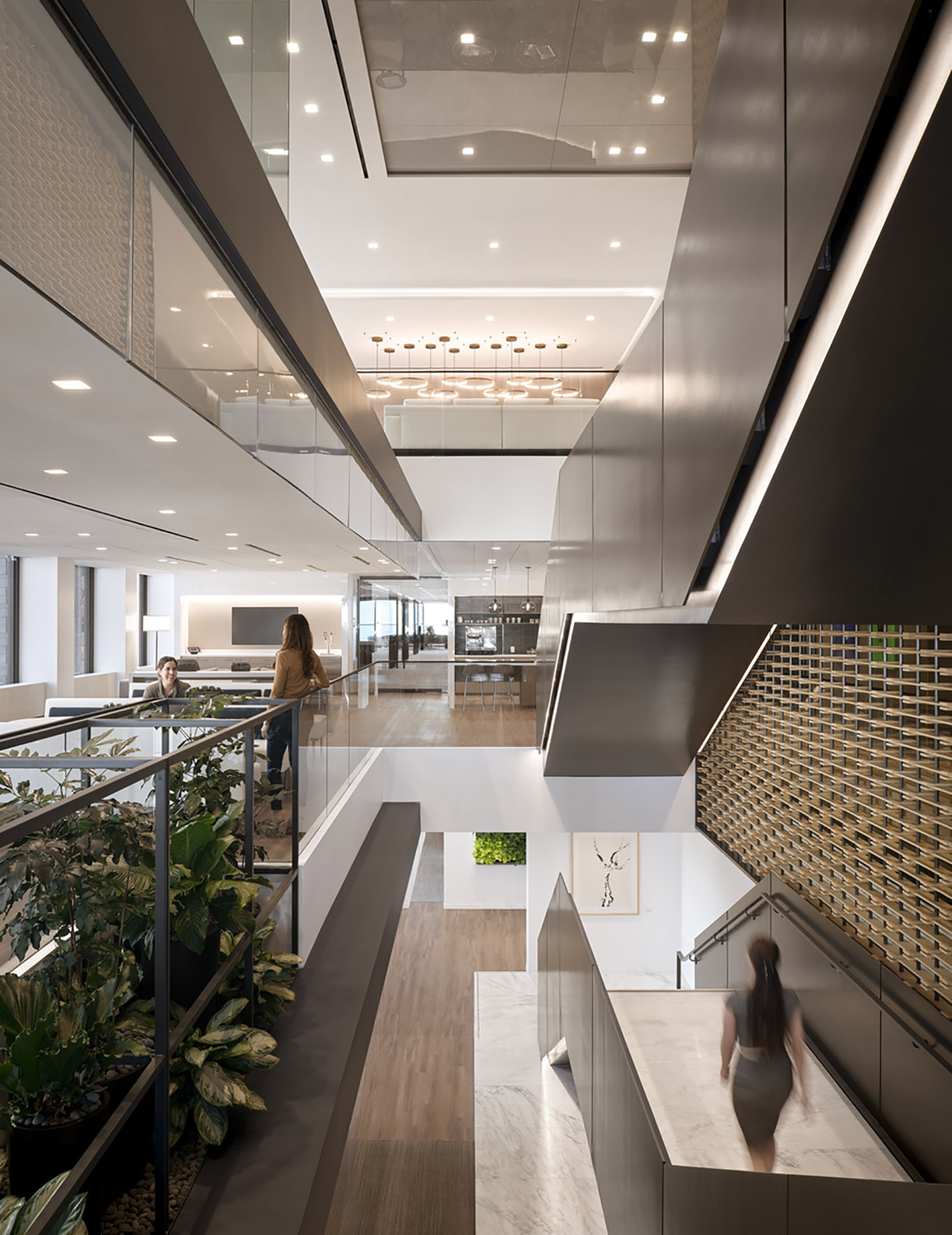
HOME ENVIRONMENTS ARE EFFECTIVE WORK ENVIRONMENTS
Few lawyers had worked from home regularly prior to COVID-19. Most now see home environments as effective environments for working. —GENSLER U.S. WORK FROM HOMESURVEY 2020 SUMMER/FALL
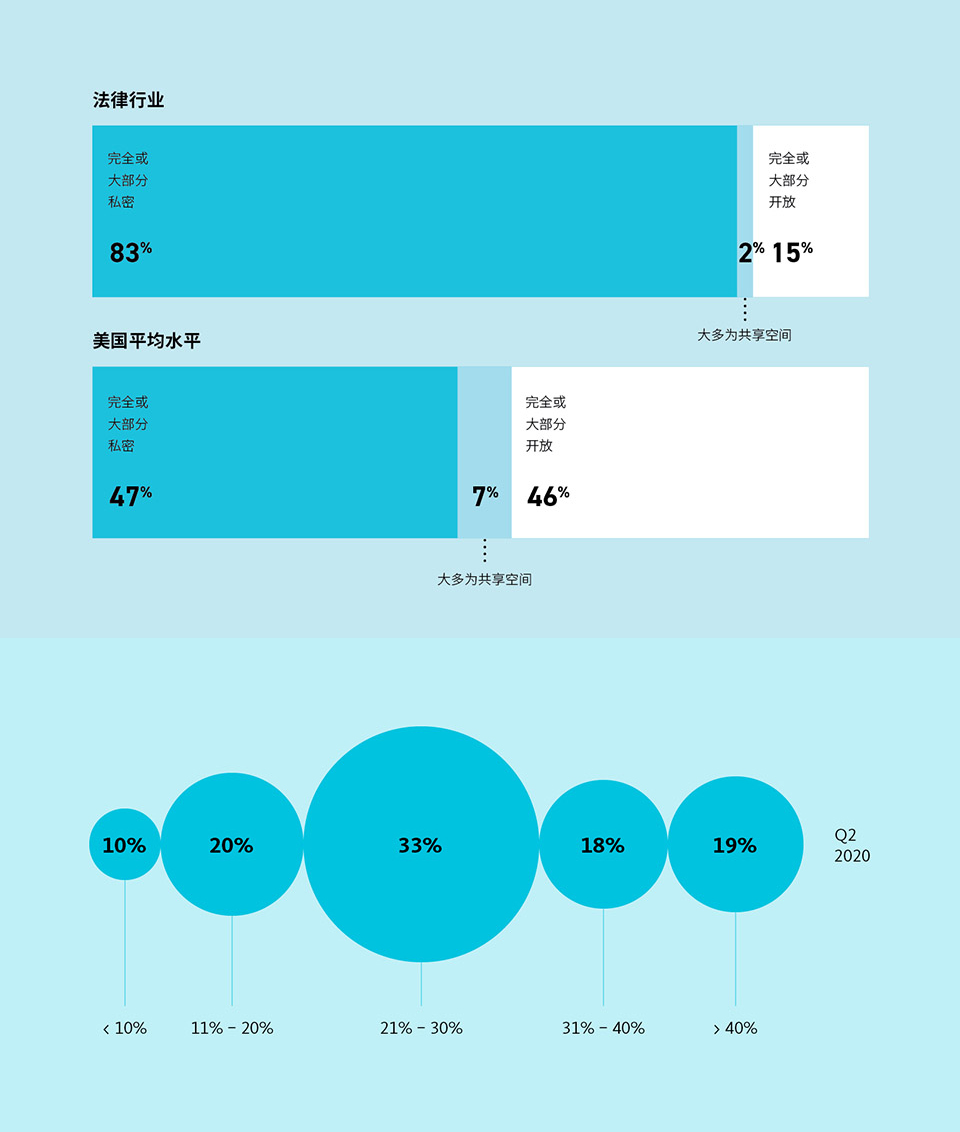
TECHNOLOGY COMPANIES
People have always been at the center of the tech workplace. Now, as a hybrid model for work emerges, the office will be centered on purpose and informed by data. Community, equity, reuse, well-being, and balance have emerged as vital components of the new work experience, regardless of where work happens.
KNOWLEDGE SHARING
HEALTH CONCERNS ARE PRIORITIZING KNOWLEDGE AND DATA
As worker safety has become a priority, the need for data and knowledge has come to the forefront. Now, tech companies want to create data about how people work and learn from it. Knowledge (and access to it) is the new amenity. In a post-pandemic world, companies will need to invest in tools to keep their workforce informed — from building and safety protocols, to scheduling coordination, and company updates. Data and content sharing with employees will be key.
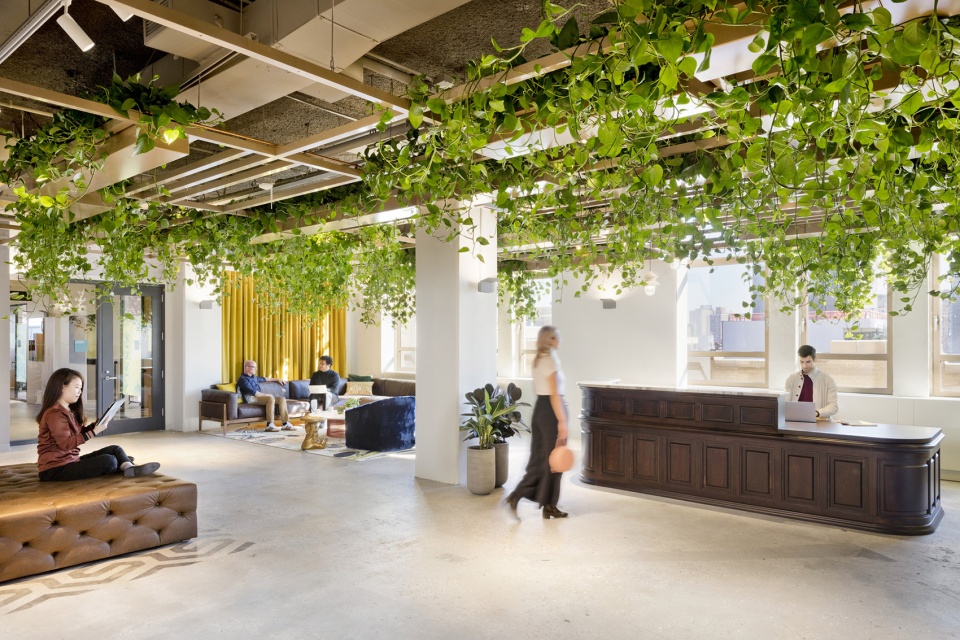
COMMUNITY SPACES
ENGAGE THE COMMUNITY THROUGH THE “FIRST FLOOR”
Tech companies are looking to extend their reach into the surrounding neighborhood by investing in the “first floor” — creating streetlevel spaces and workplace amenities that can be enjoyed by the community in new ways. By reinventing sidewalk-facing storefronts and office lobbies, companies can design spaces and programs that bring people and local organizations into the building or extend their culture from the workplace to the street. In doing so, they can serve more people in the community beyond just the daytime workforce and reimagine the ground floor of our cities.
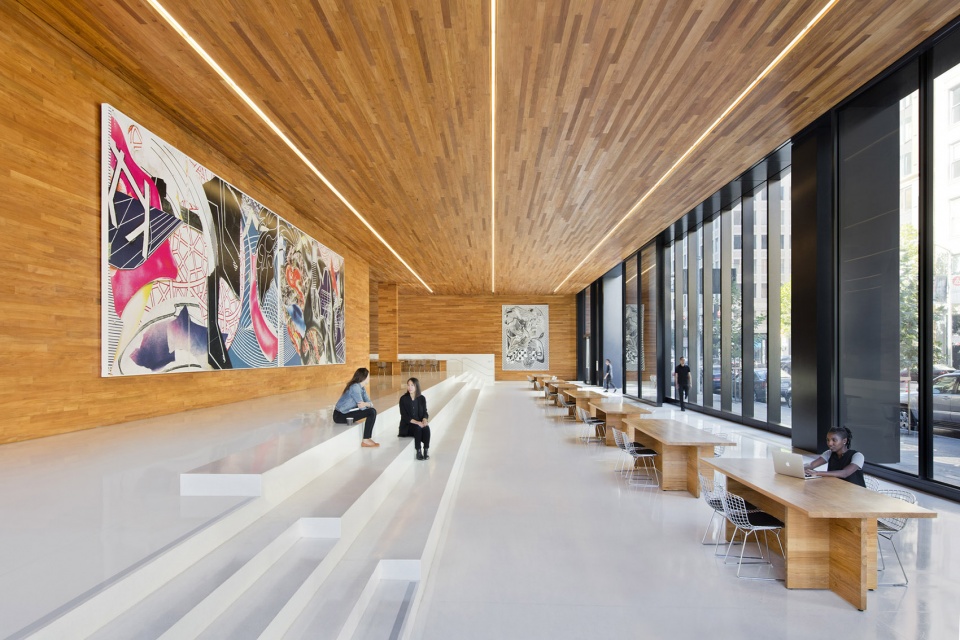
OFFICE EQUITY AT HOME
INVEST IN EQUITY BETWEEN HOME AND OFFICE WORK ENVIRONMENTS
As remote work accelerates, companies will need to reckon with disparities in people’s home environments. Organizations can extend principles of office equity to people’s homes by investing in tools and resources to optimize WFH setups, such as monitors, improved Wi-Fi, and office furniture. Within the hybrid office, redesigned conference rooms can create equality among participants, regardless of physical or virtual presence. By focusing on equity and inclusion, the workplace can strengthen company culture and form new connections.
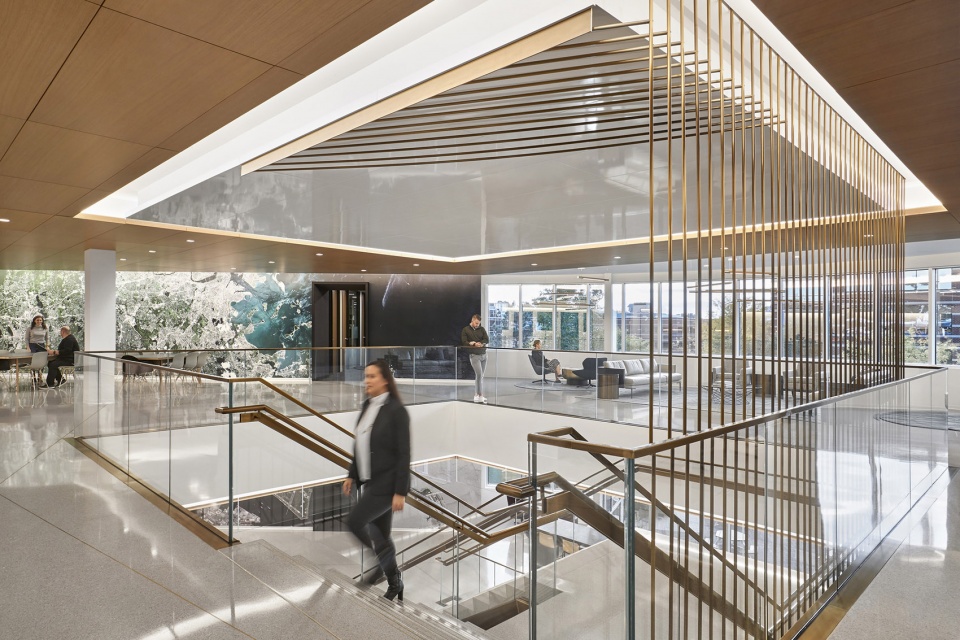
DECENTRALIZATION
HUB-AND-SPOKE MODELS GAIN MOMENTUM
The pandemic has acted as a catalyst for companies to rethink their space and operational needs. One idea that is rapidly gaining traction with commercial real estate investors is the “hub-and-spoke” model, in which companies are looking to move away from a single centralized headquarters in favor of multiple, smaller satellite offices that are strategically located in new and emerging markets. As tech companies explore a decentralized approach to the workplace, the hub-and-spoke model may allow them to adapt and prepare for an uncertain future.
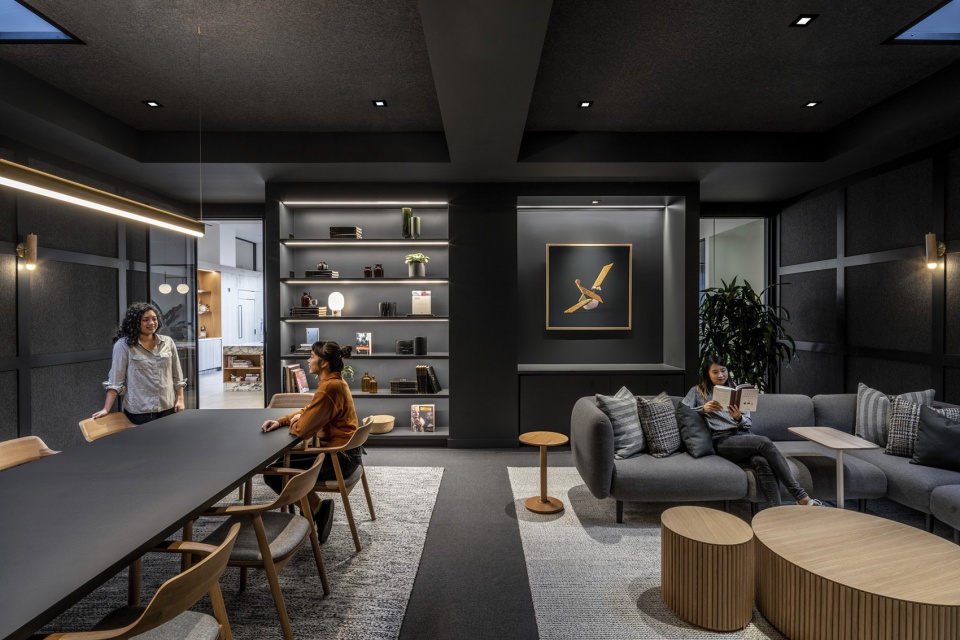
REALLOCATE SPACE TO MEET PURPOSE
The allocation of square footage will be the same — it’s how we use it that will be different. An emphasis on design and how we use/reuse the spaces will be even more important because the office will have greater purpose. A redesign of meeting and collaboration spaces will be needed to accommodate hybrid meeting modes. As the office becomes more of a collaboration hub, planning will evolve from a space-by-desk basis to account for the higher ratio of collaborationdriven work that’s expected to bring people back into the office.
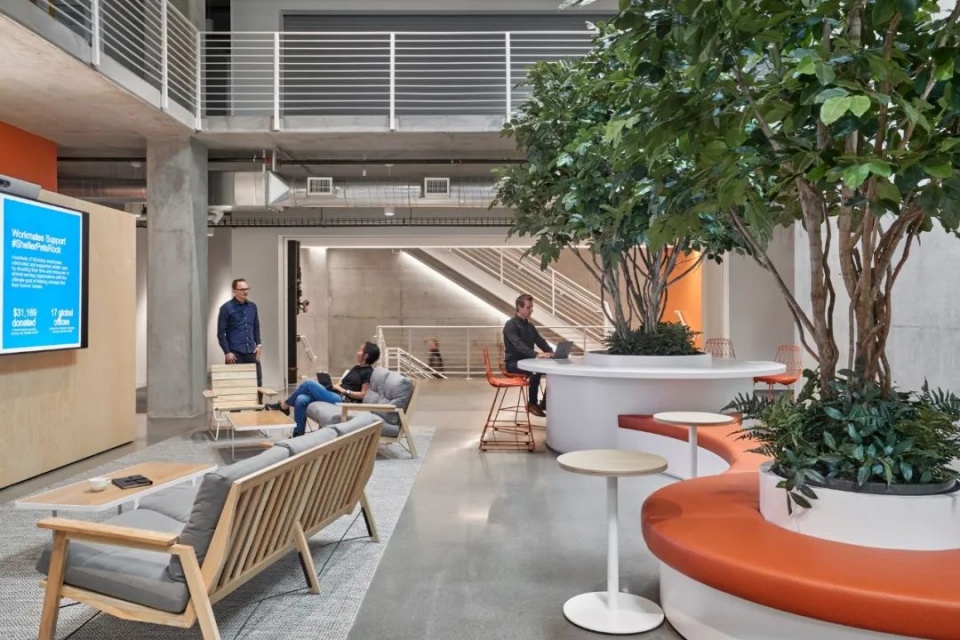
MID-DOOR SPACES
INTEGRATE OUTDOOR AND INDOOR SPACE
Tech companies are looking to the addition of outdoor spaces, such as terraces or balconies, to address workers’ concerns with indoor air quality and to offer more choice and diversity in space. Mid-door (not fully outdoor/not fully indoor) spaces are becoming more prevalent. People enjoy having a seamless indoor-outdoor connection, and these spaces can serve as third places where work happens outdoors. Developments that integrate indoor and outdoor space will be more desirable to prospective tenants and building occupants.
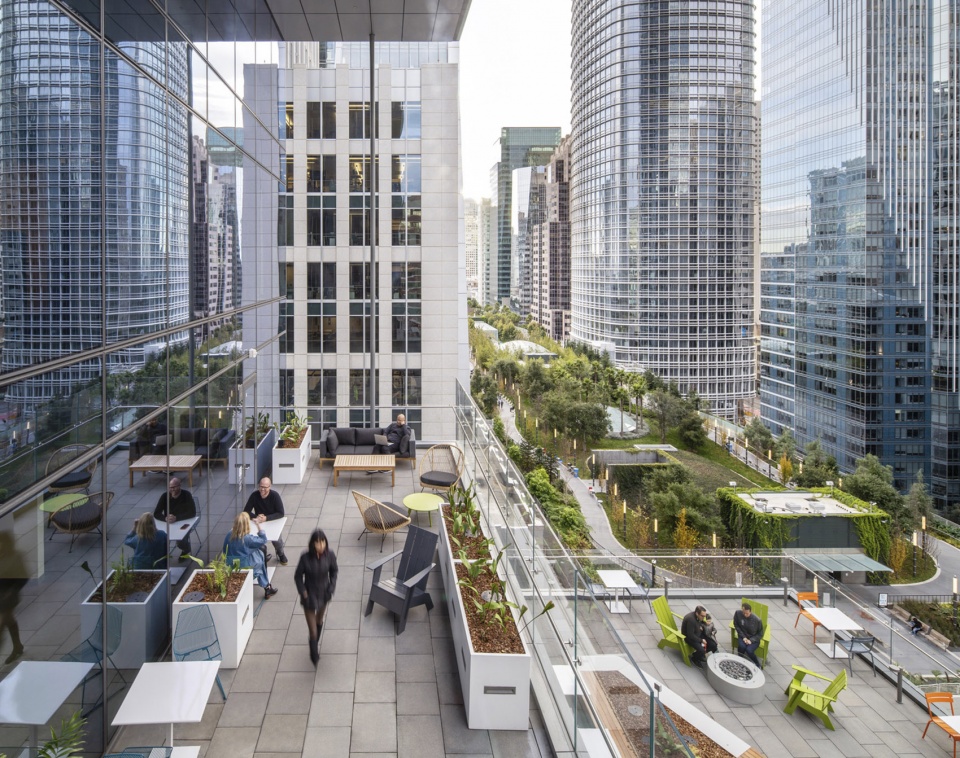
CONSUMER GOODS COMPANIES
In response to the economic downturn and supply chain disruption accelerated by the pandemic, Consumer Goods companies see opportunity in consumer engagement and innovation through co-located experience centers and research and development facilities. Across the industry, there is sharper focus on flexibility for remote work.
WORKPLACE CULTURE
PRIORITIZE CULTURE AND CONNECTION IN THE WORKPLACE
Company culture and connection to brands have become even more critical. According to a 2019 Glassdoor multi-country survey, 75% of employees pay close attention to a company’s culture before applying for a job. And 56% say that culture is more important than salary. The workplace is essential to building culture, and that extends to the virtual realm. According to PwC, organizations with a distinctive culture that gives them a competitive advantage are twice as likely to outperform other companies in their industry peer group on revenue and profitability.
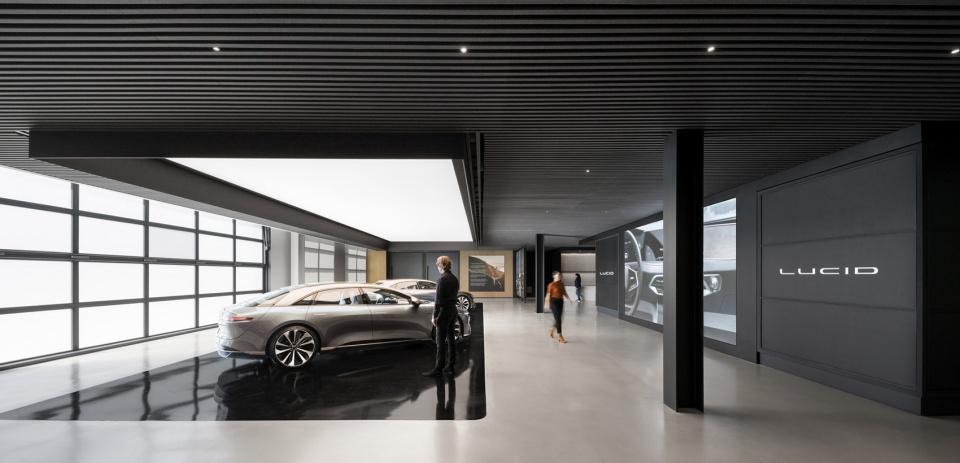
MORE COLLABORATION SPACE
SAFE COLLABORATION SPACE IS IN DEMAND
The distribution of focus and collaboration space is changing in the workplace. Consumer Goods companies are leveraging space more effectively around product and consumer engagement, where there will be less real estate dedicated to focus work and more toward collaboration, with mockup spaces, showrooms, virtual reality lounges, and more. There is still a critical need for Consumer Goods workers to work in the office with products and physical collateral. Digital technologies can bring remote and on-site team members together for seamless collaboration. Consider creating a “digital twin” of the workplace to allow employees — whether collocated or remote — to connect.
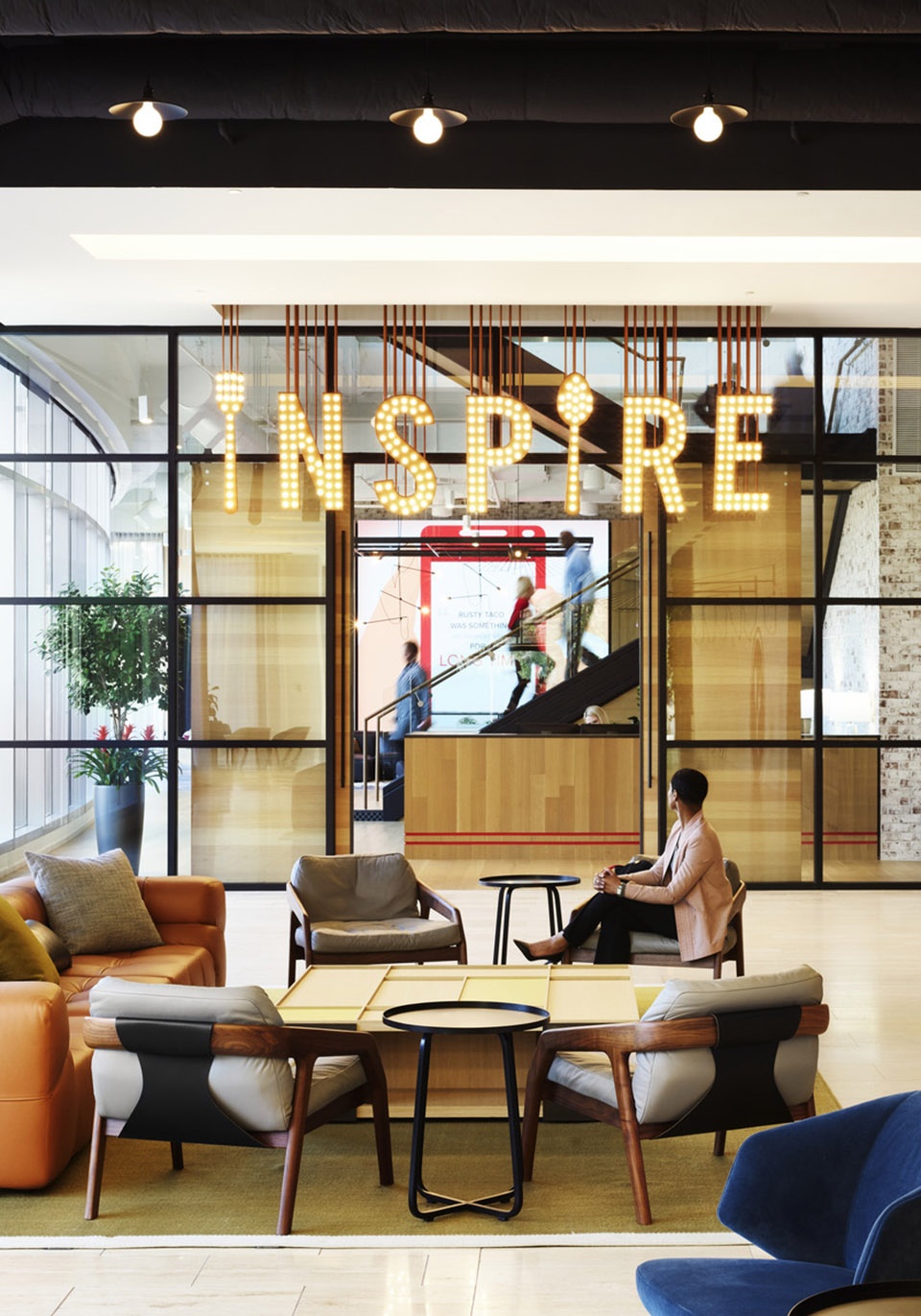
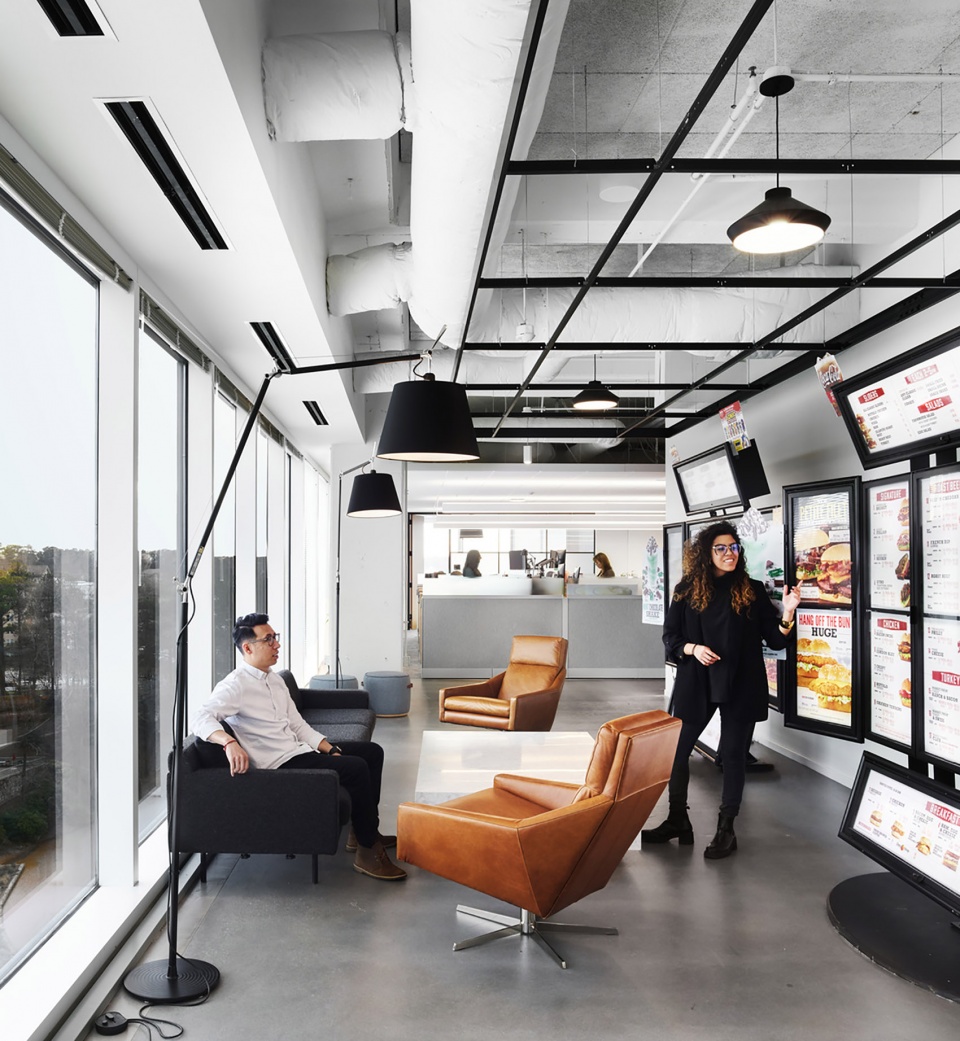
EXPERIENCE CENTERS
WORKPLACE, R&D, AND EXPERIENCE CENTERS ARE CONVERGING
The pandemic has accelerated the trend of the workplace becoming a touch point for consumer engagement. In order to position themselves for the future, Consumer Goods companies have taken a more keen focus on innovation and experience centers, as well as research and development facilities, all co-located with workplace. The industry is seeing a convergence of workplace and retail experience centers.
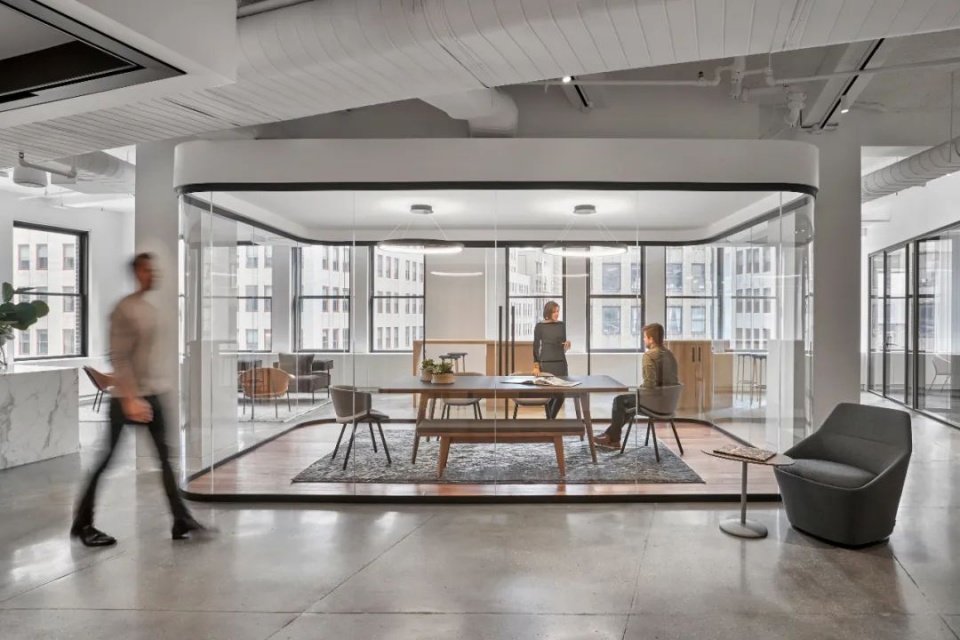
MEDIA COMPANIES
The rate of change in the media industry has accelerated with the increased adoption of streaming services and 5G, mobile technologies, consolidation, and increases in the speed and volume of content creation. The velocity of change is impacting the spaces media companies inhabit as the industry considers flexible work options, new settings, and digital technologies.

FLEXIBLE WORK
HEALTH CONCERNS HAVE PUSHED THE INDUSTRY TO EMBRACE FLEXIBLE WORK
The media industry has traditionally not embraced flexible work; however, media and entertainment companies are now increasingly considering flexible work options such as unassigned seating, work-from-home, and flexible arrangements. With the pandemic, the industry has also rapidly adopted technologies that were previously in beta cycles, making it possible to seamlessly shift to distributed production workflows enabling remote content creation and distribution. While studios for video and audio content creation will not go away, the media workplace and campus will be designed to support content capture and distribution.
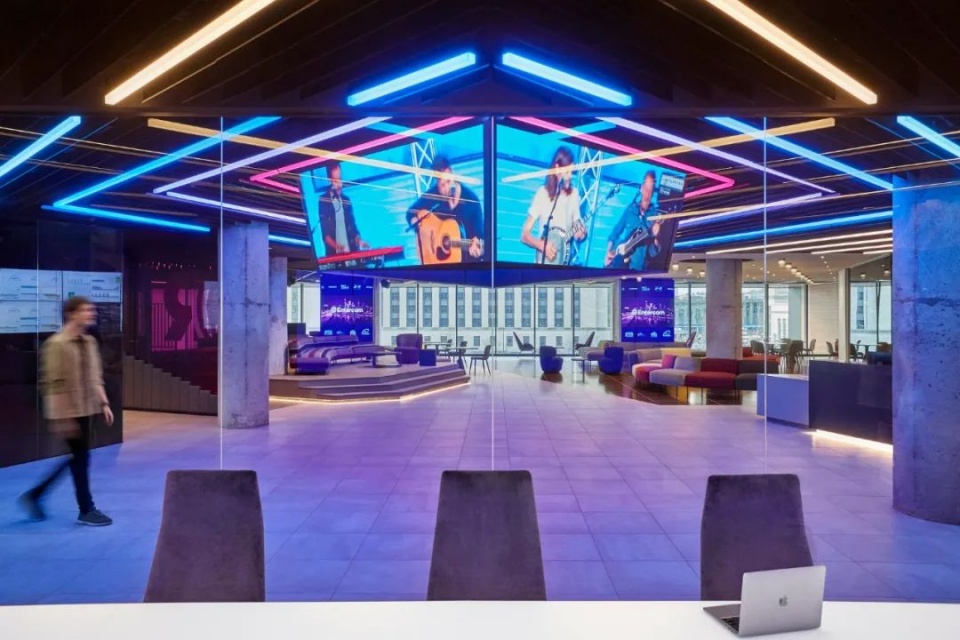
CONTENT CREATION
THE WORKPLACE REMAINS CRITICAL FOR CONTENT CREATION
The pandemic prompted a shutdown at entertainment and media facilities across the globe and necessitated the move toward virtual and remote production and editing. Despite this shift, the physical workplace remains integral; in a highly relationship-driven creative industry, the workplace can foster human connections and evoke honesty, transparency, and egalitarianism. Such qualities are critical for an industry at the heart of a healthy, civil, and equitable public discourse. Media employees will return to the workplace not just for access to content creation spaces, but also to cultivate trust.
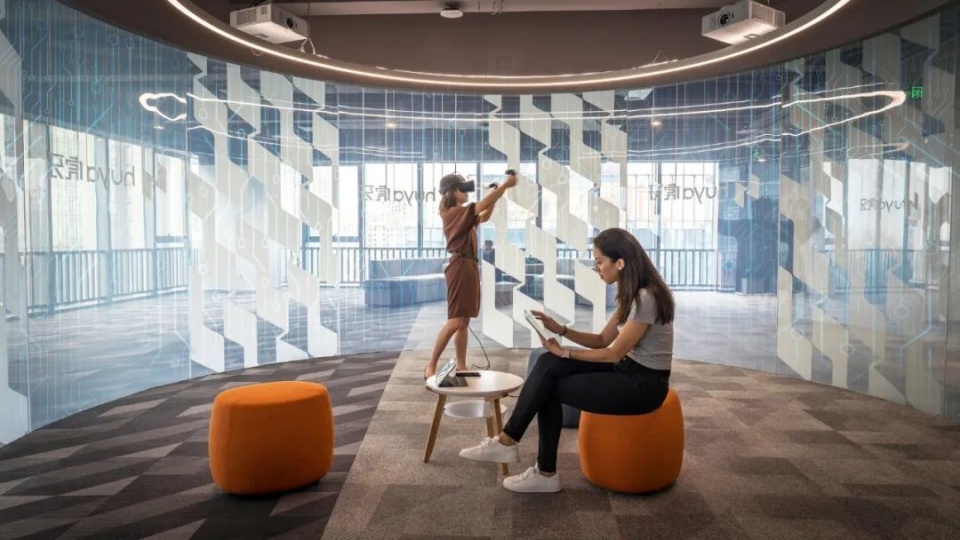
EMERGING BUSINESS MODELS
THE PANDEMIC INTRODUCED NEW BUSINESS MODELS
While COVID-19 has upended some segments of the Media industry, others have thrived, including on-demand video and streaming services. Companies that were already moving toward home-based entertainment are well positioned for this shift. To open up new revenue opportunities, some businesses are creating new business models to meet consumers where they are — at home and online. Gaming platforms are integrating e-commerce and digital platforms are hosting live events that deliver immersive home entertainment experiences. In China, for example, rising e-commerce use via live streaming has amplified in the lockdown period, according to PwC. Designing cohesive digital and physical experiences is important to drive customer loyalty.
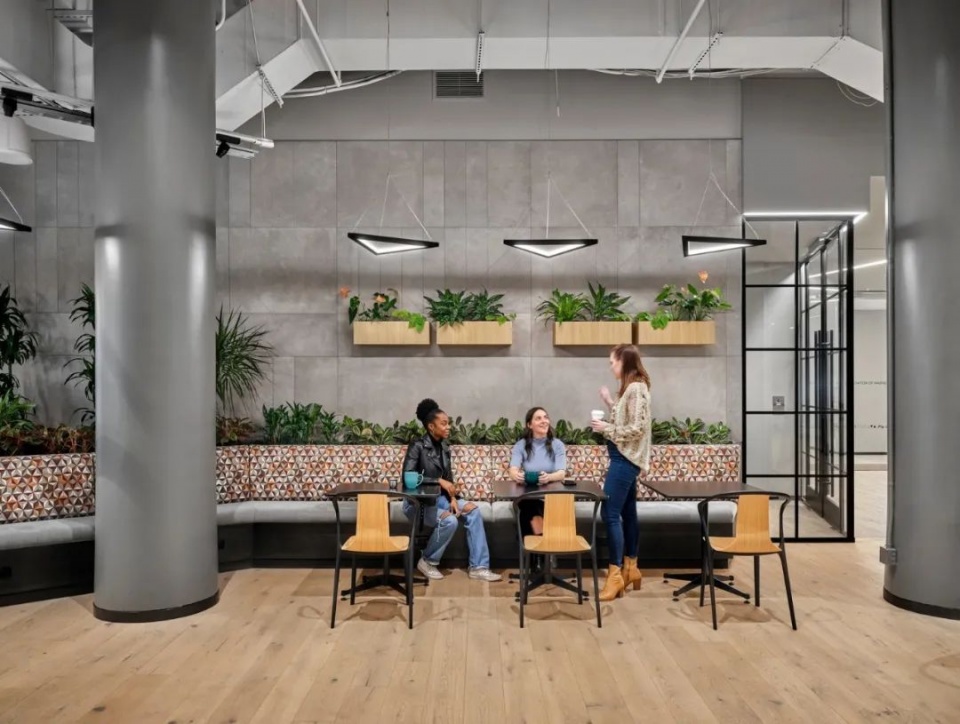
WORKPLACE EQUITY
THE POST-PANDEMIC HYBRID WORKPLACE CAN PROMOTE EQUITY
The future workplace must evolve to serve new needs; support flexible, hybrid working styles; and promote equity for all workers. If working from home is a regular part of the emerging hybrid work model, we must acknowledge that not all homes are equal. Many homes do not have strong internet access, enough space for a desk, ergonomic chairs, or enough silence to accommodate focused work. By creating a workplace for a hybrid future that prioritizes equity, companies have an opportunity to engage with and support a broader range of new and diverse talent.
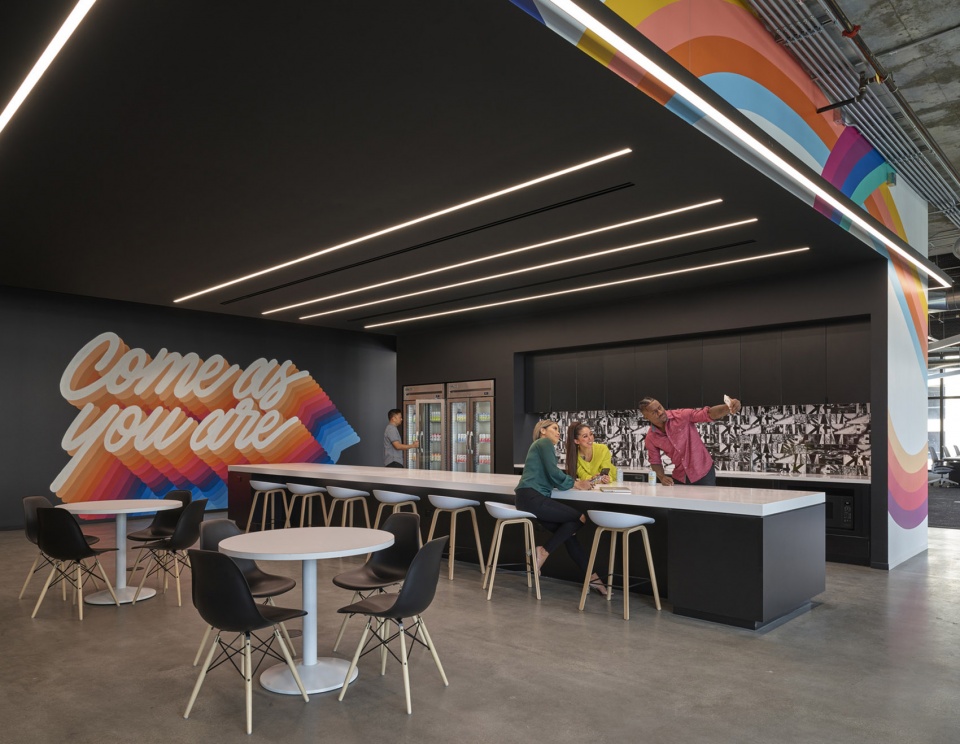
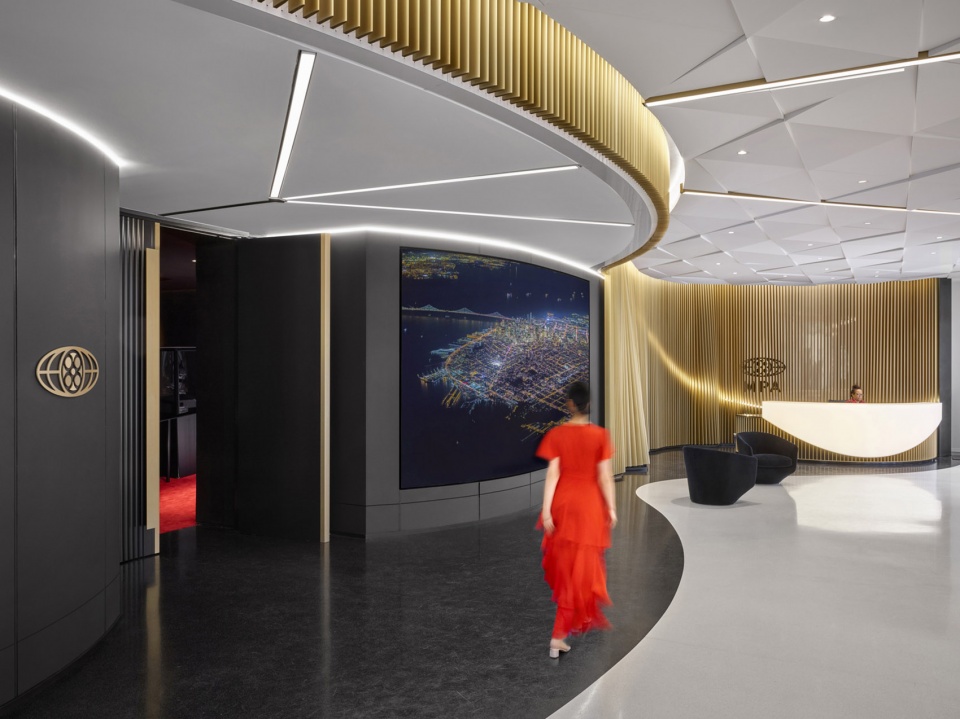
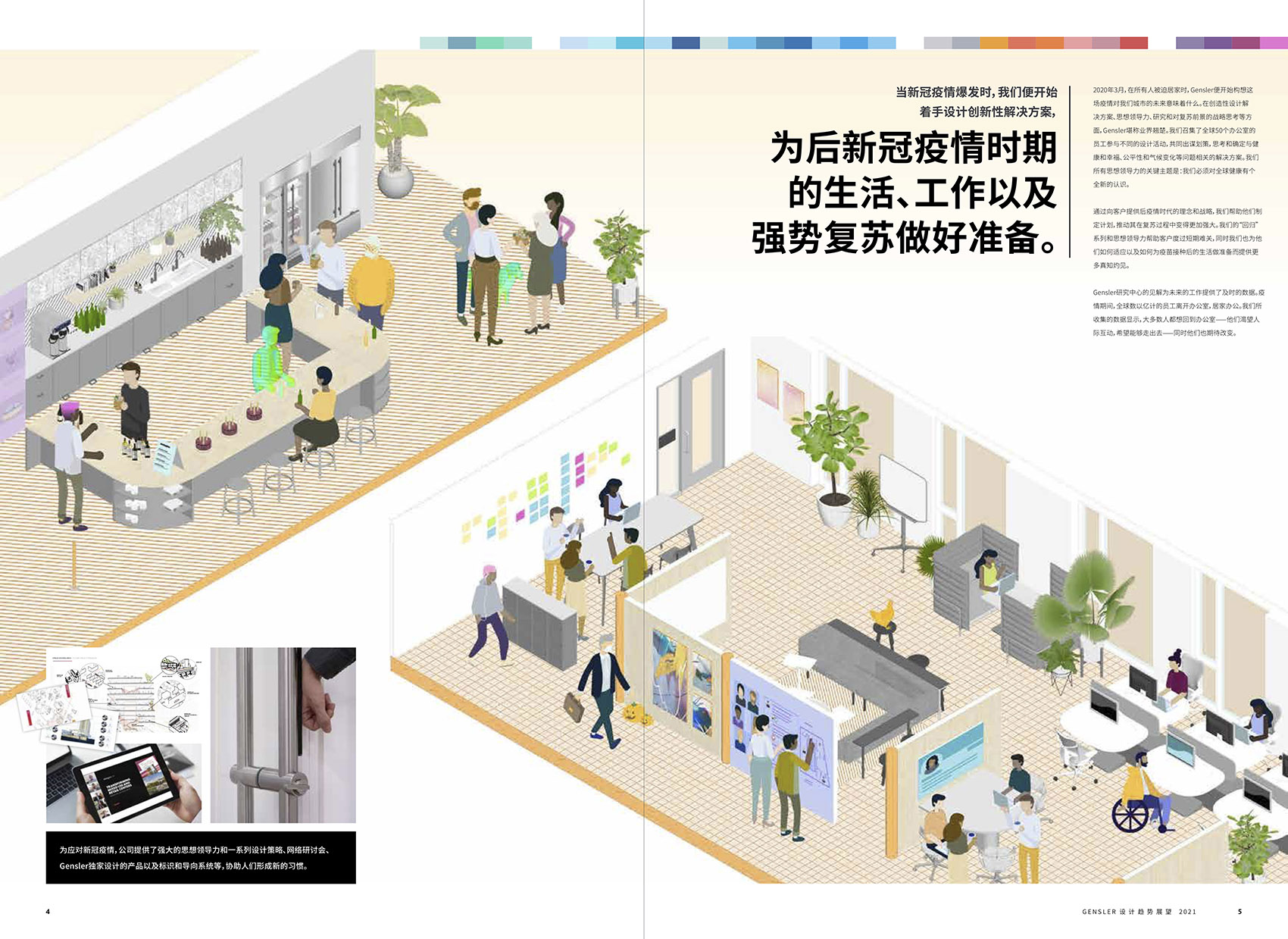
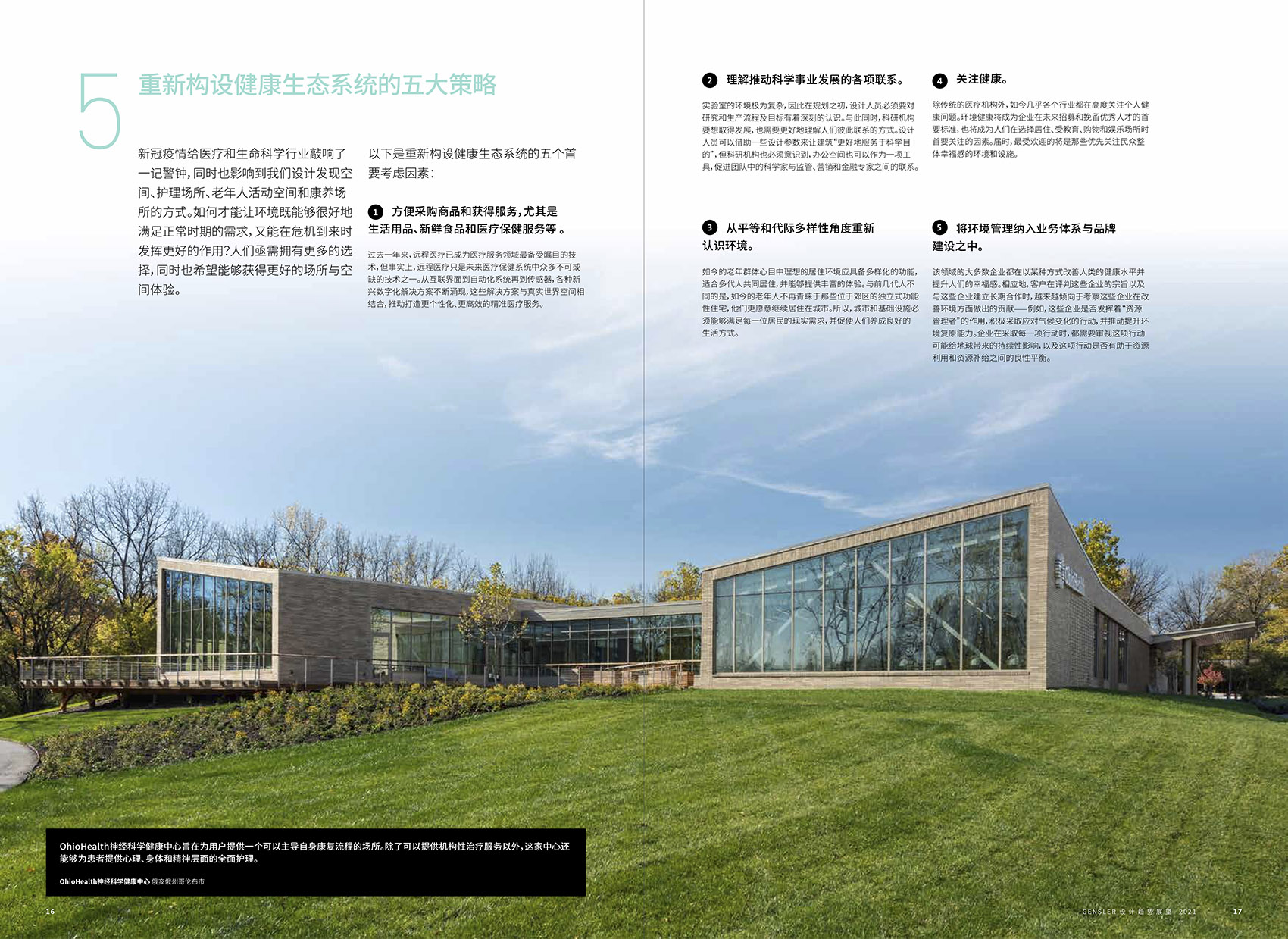
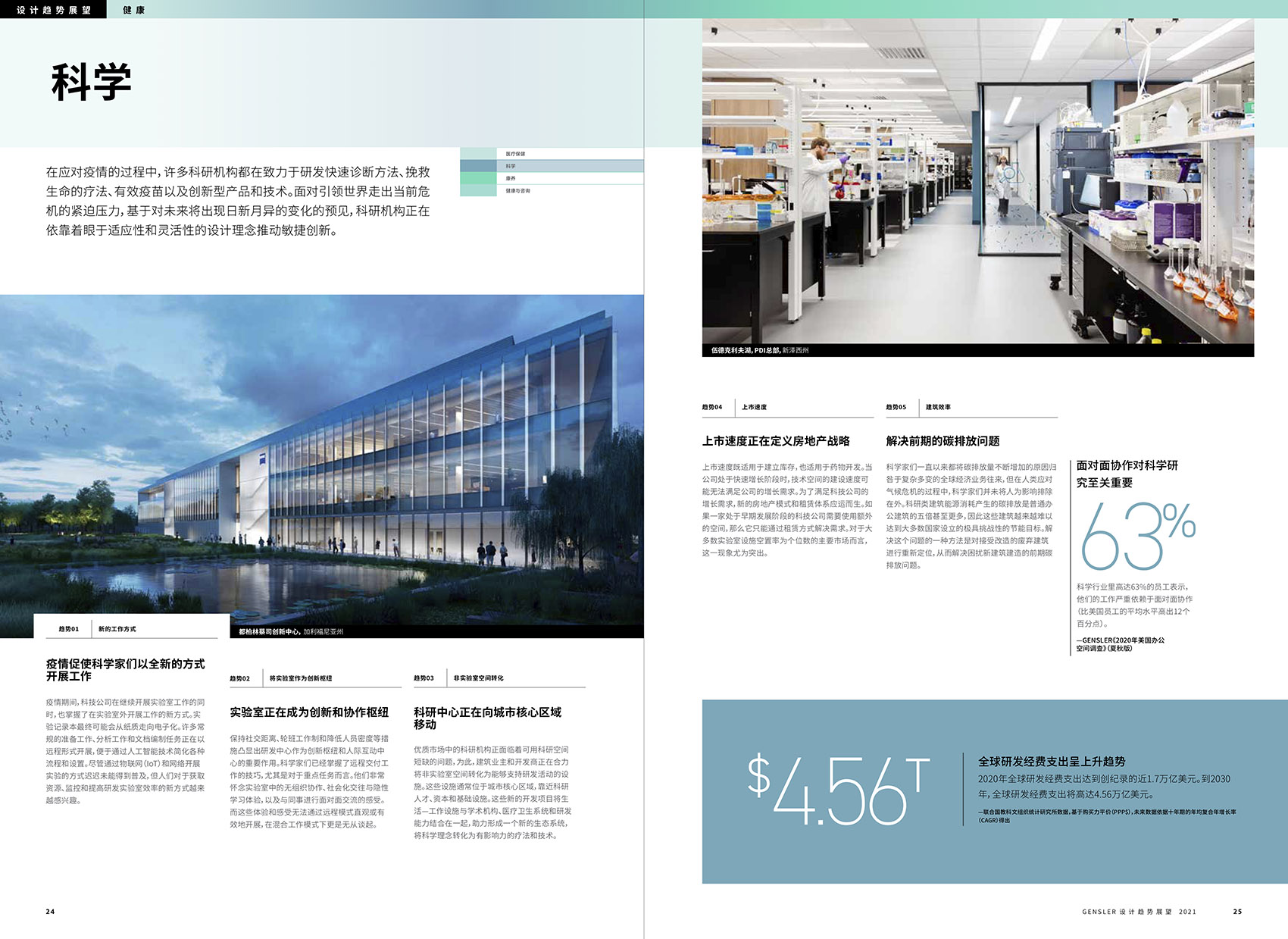
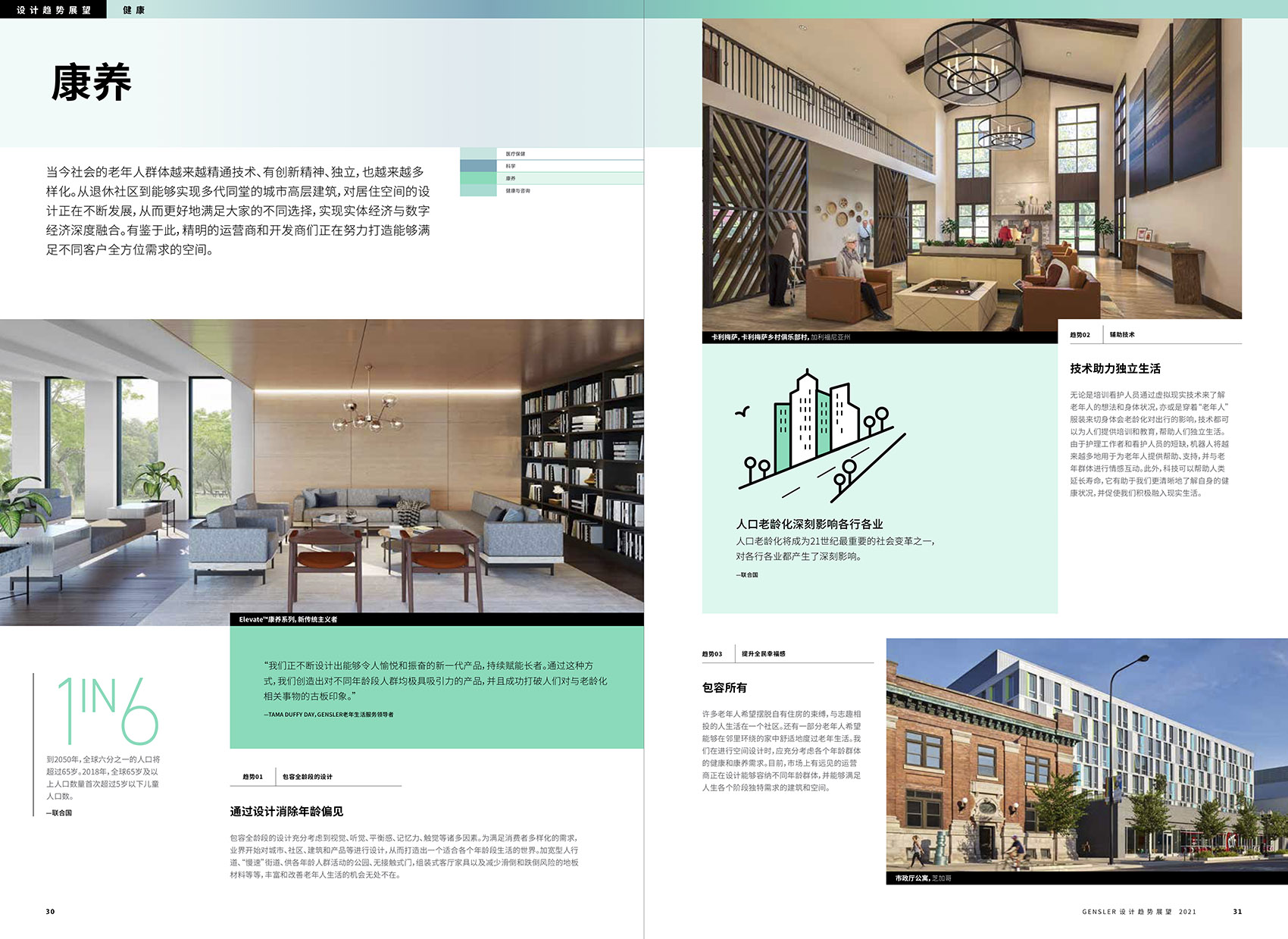
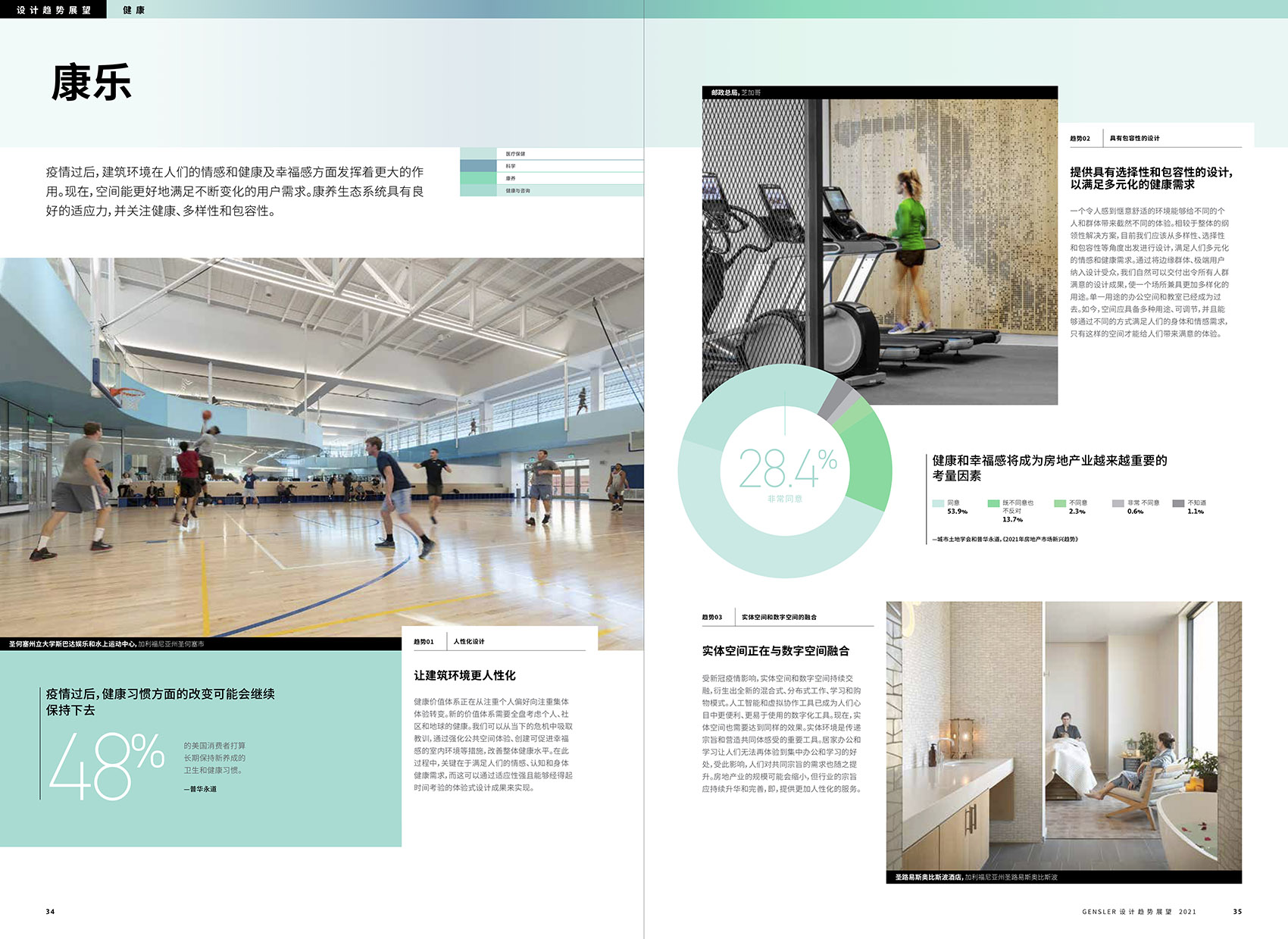
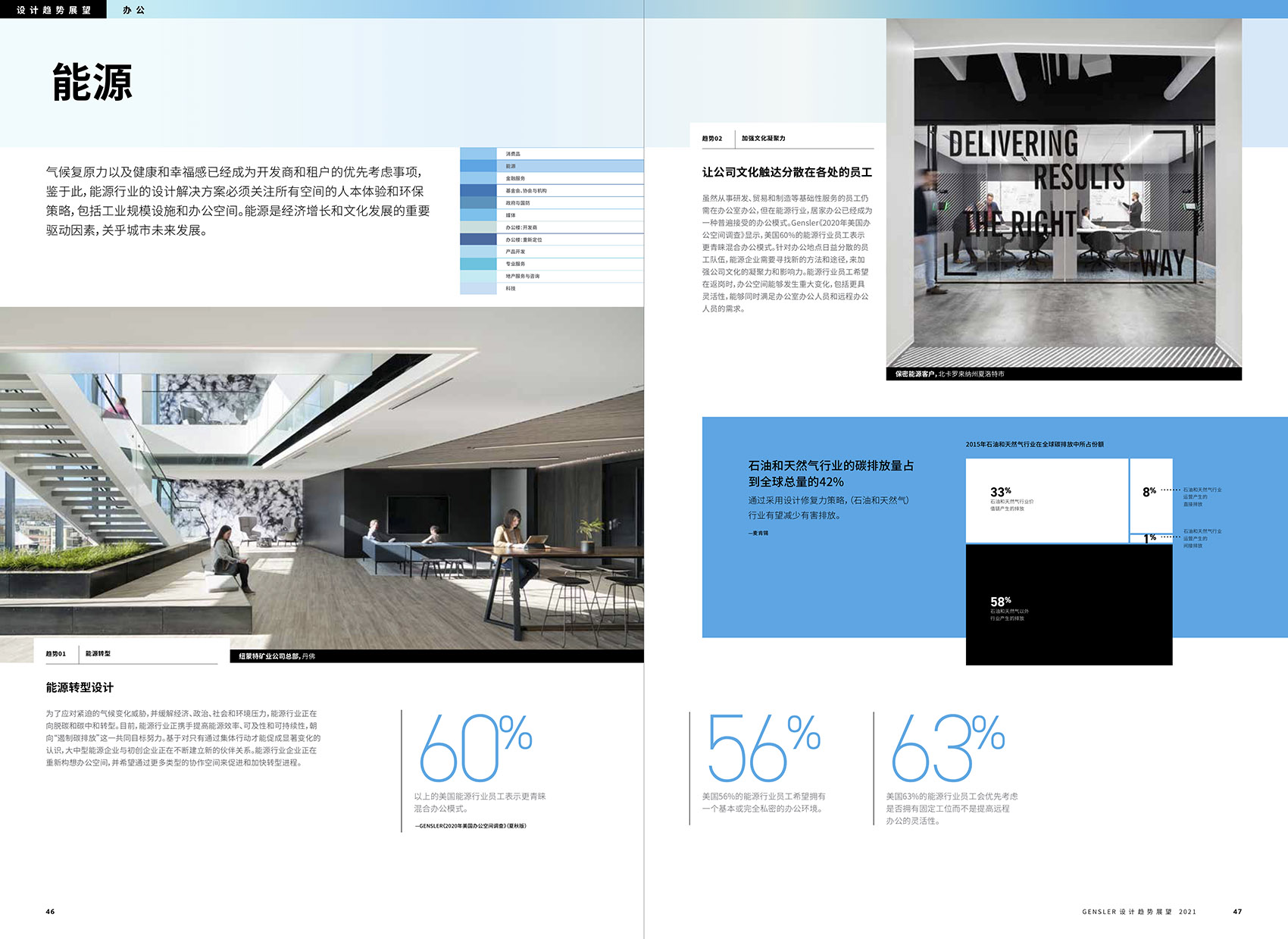
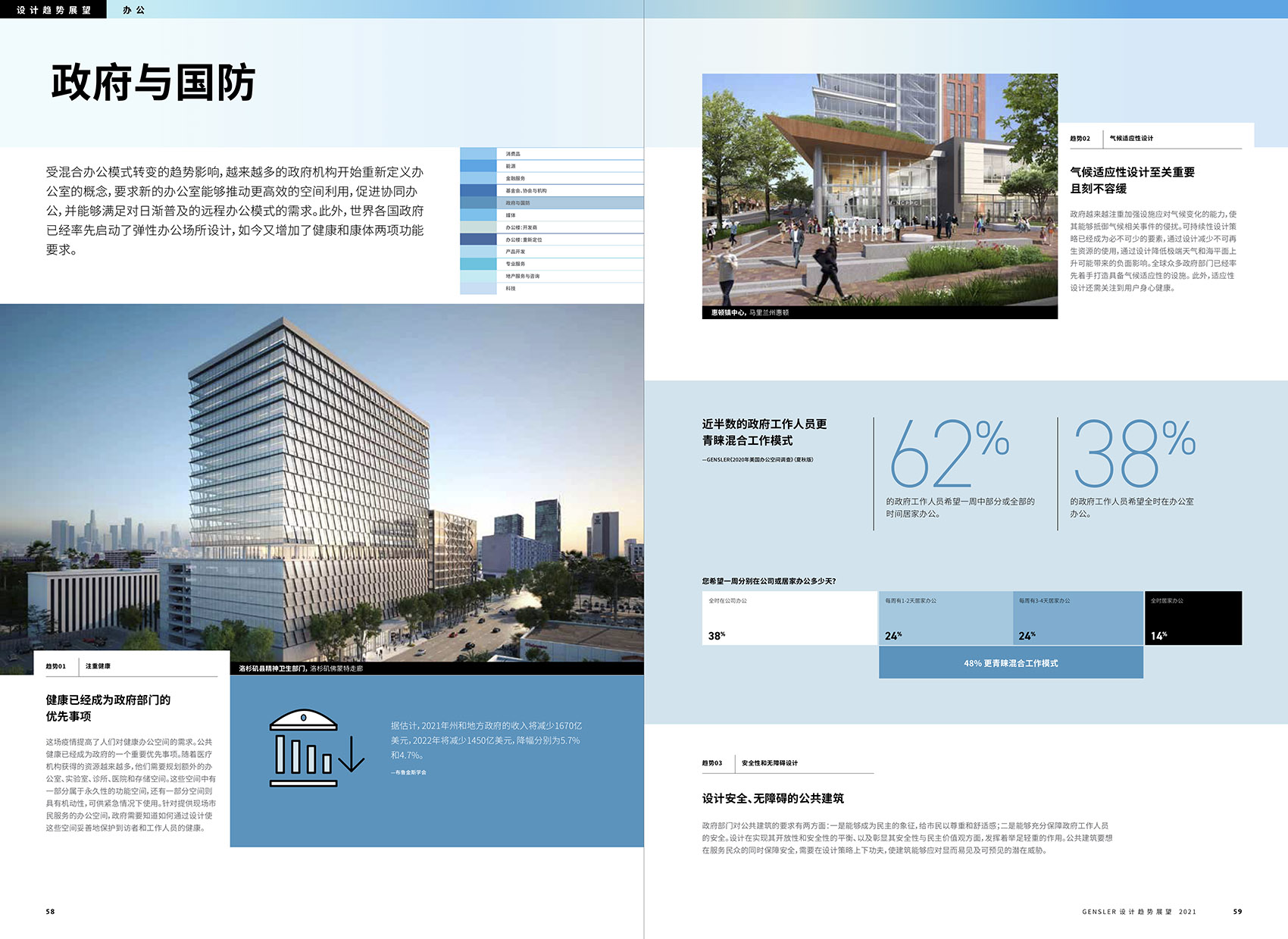
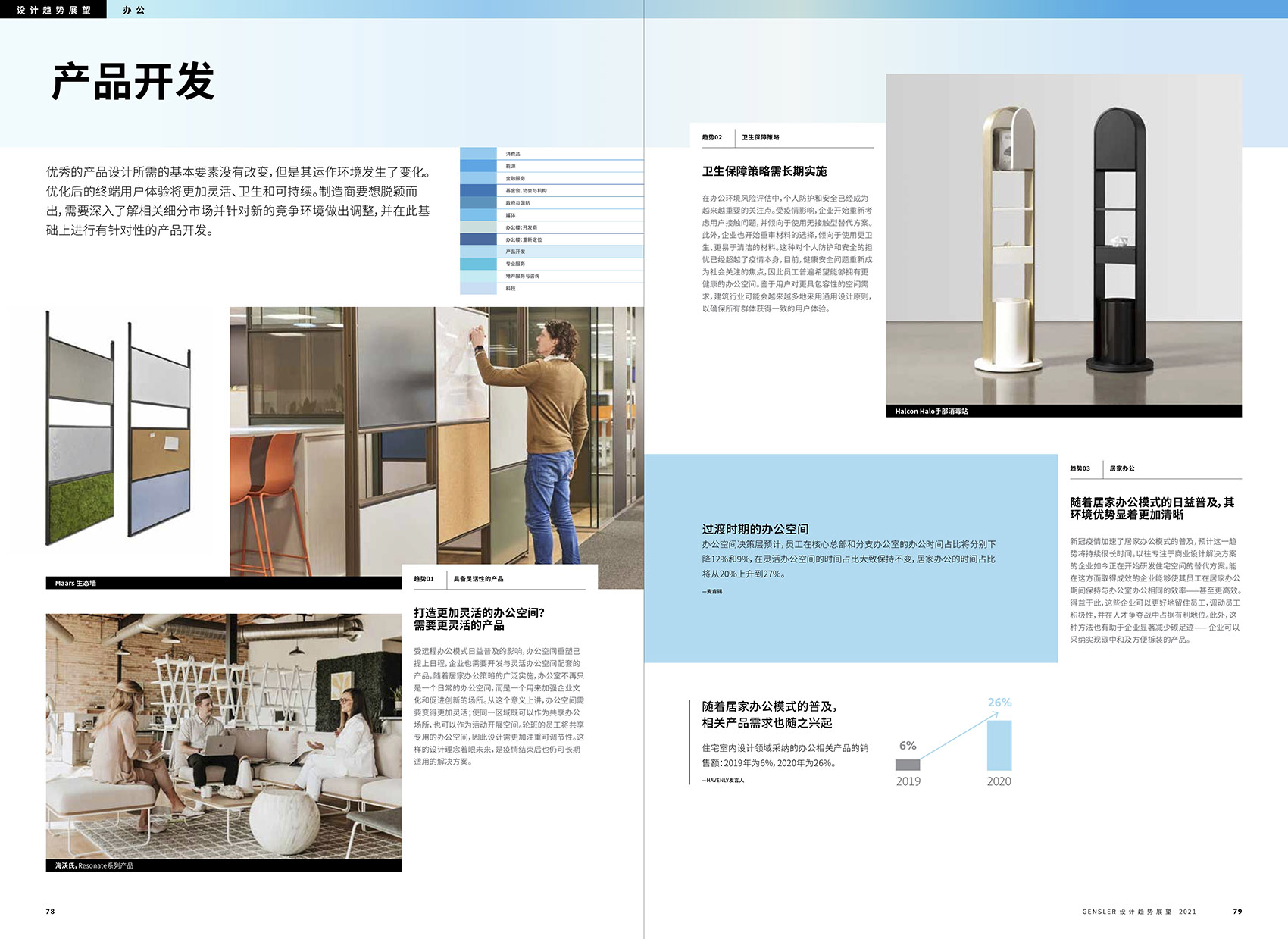
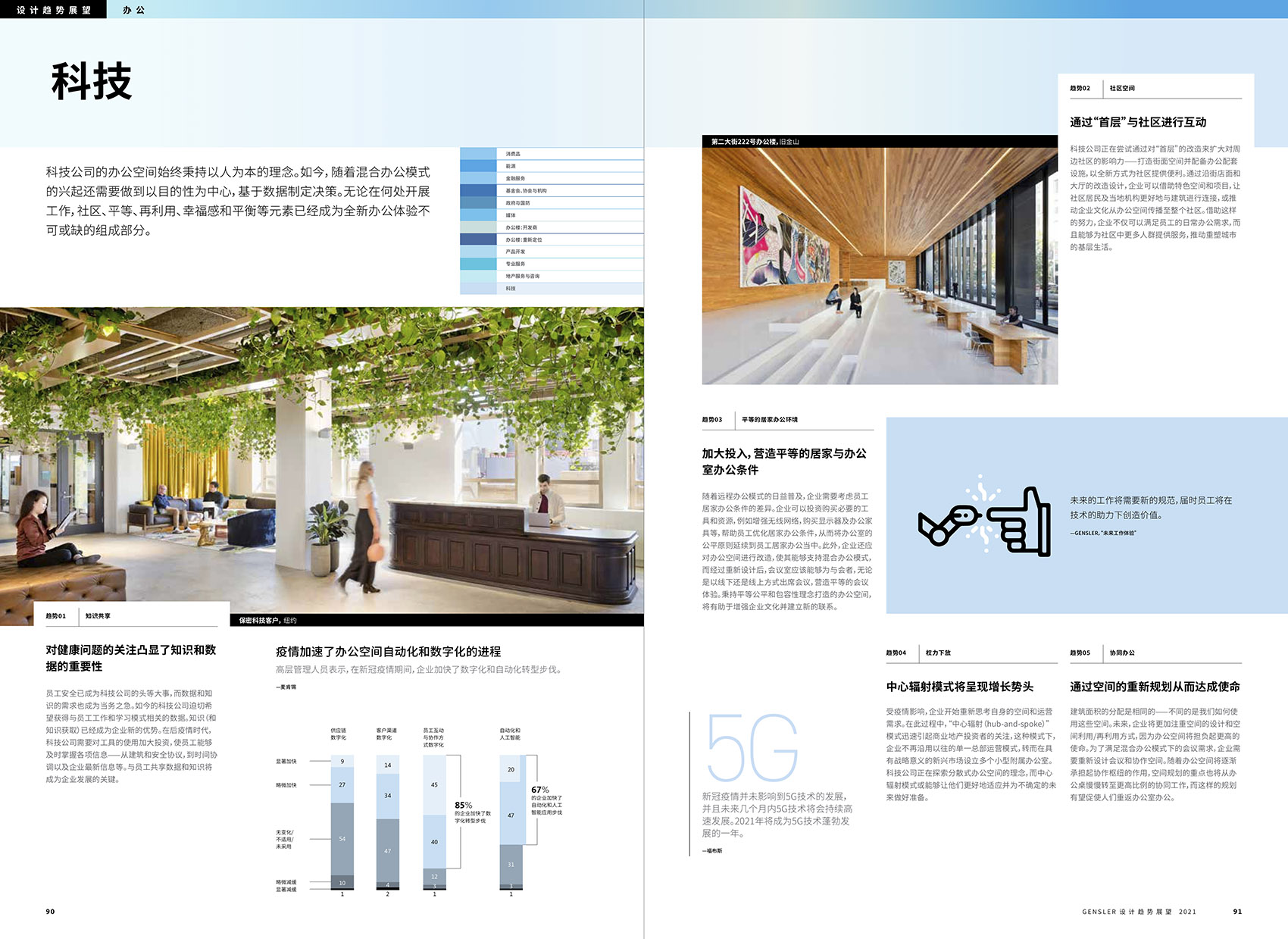
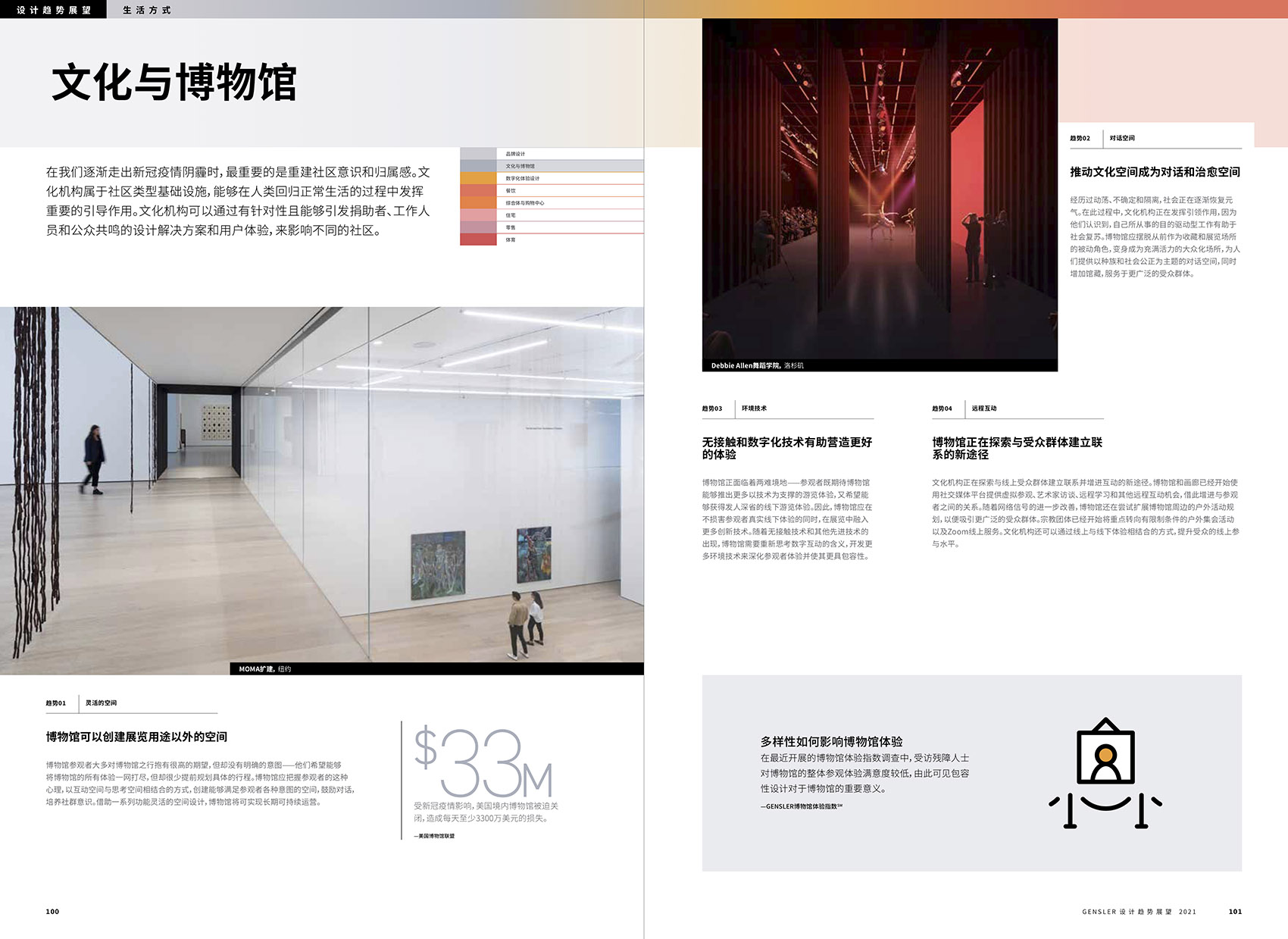
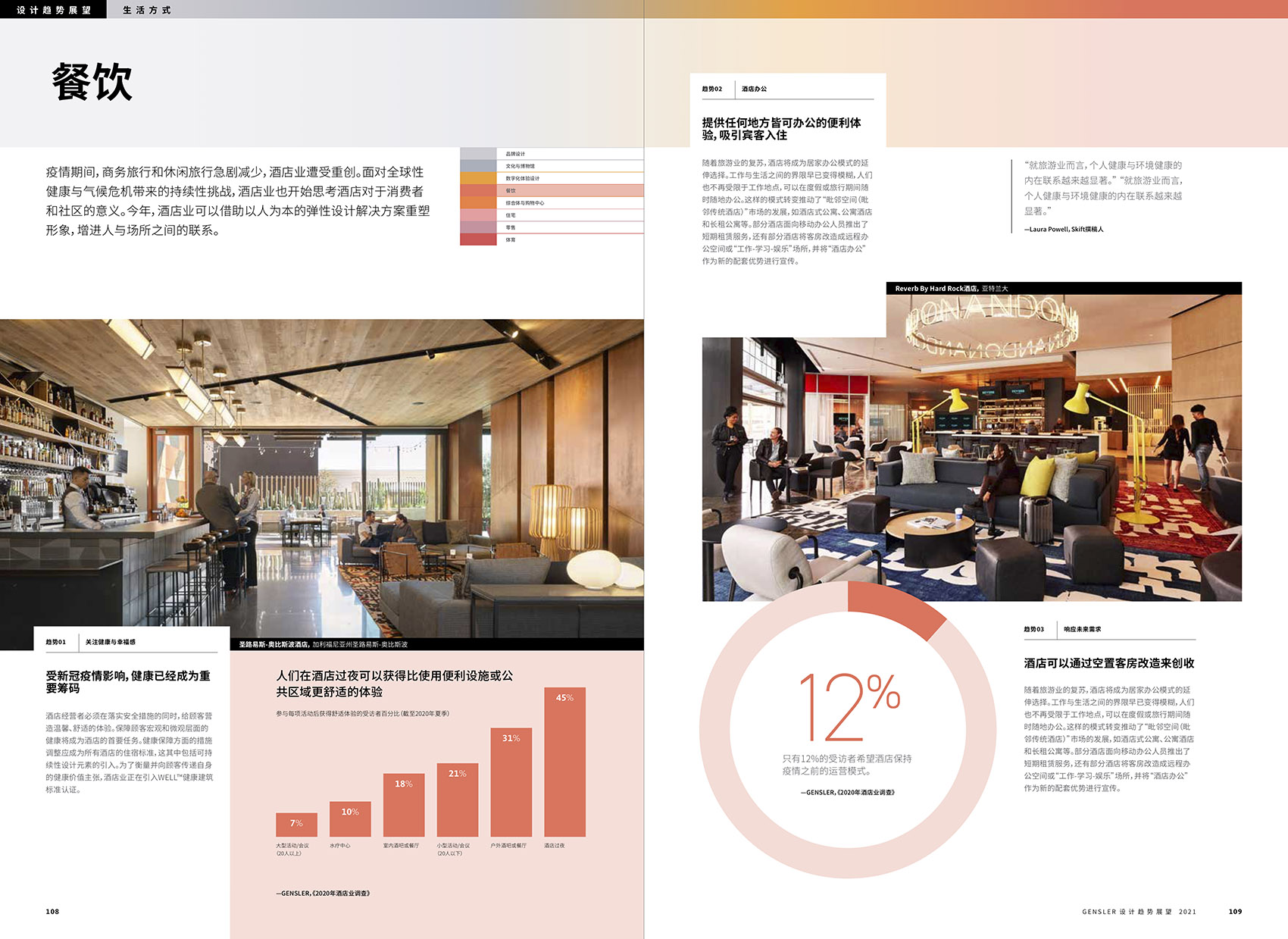
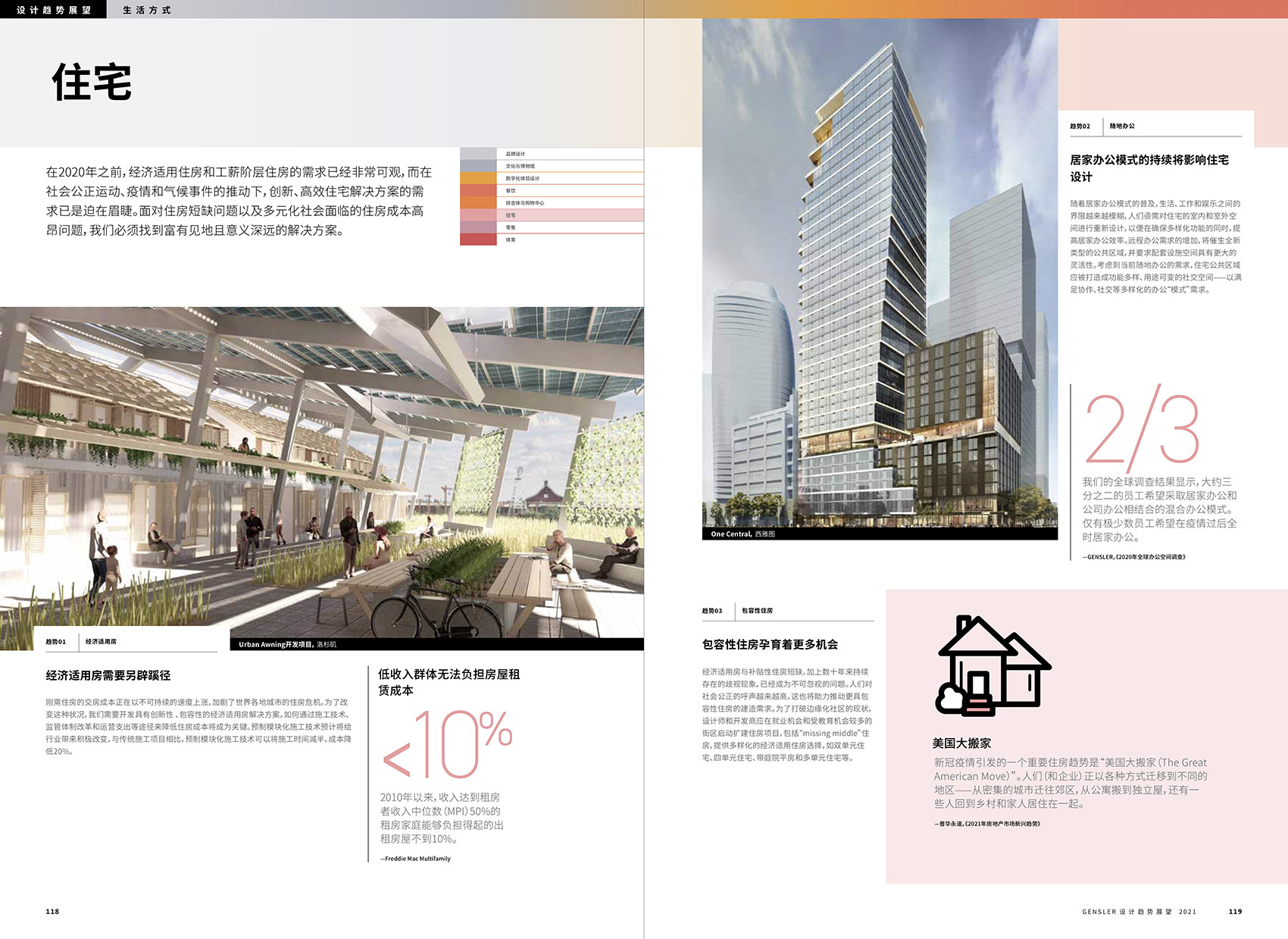
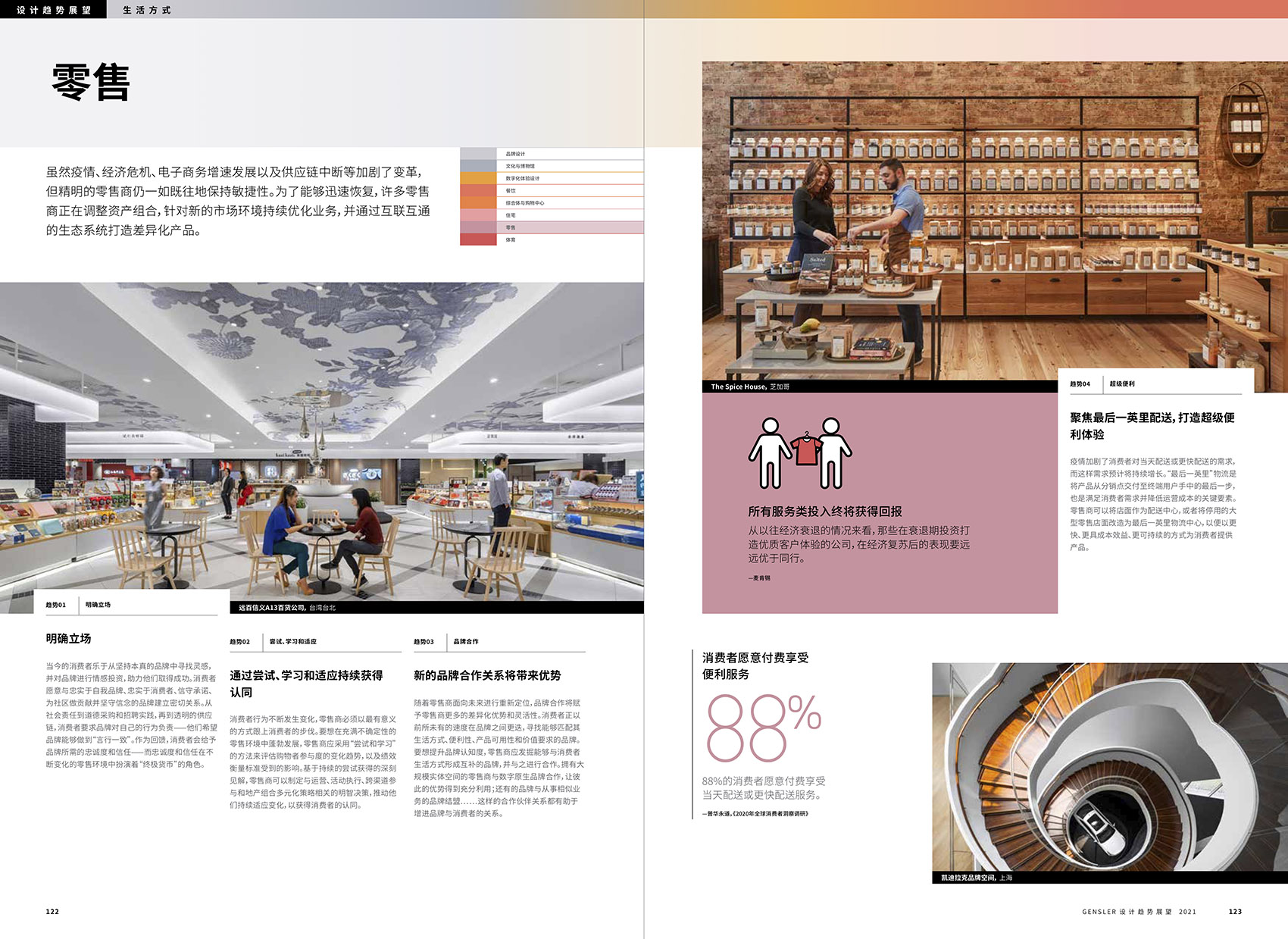
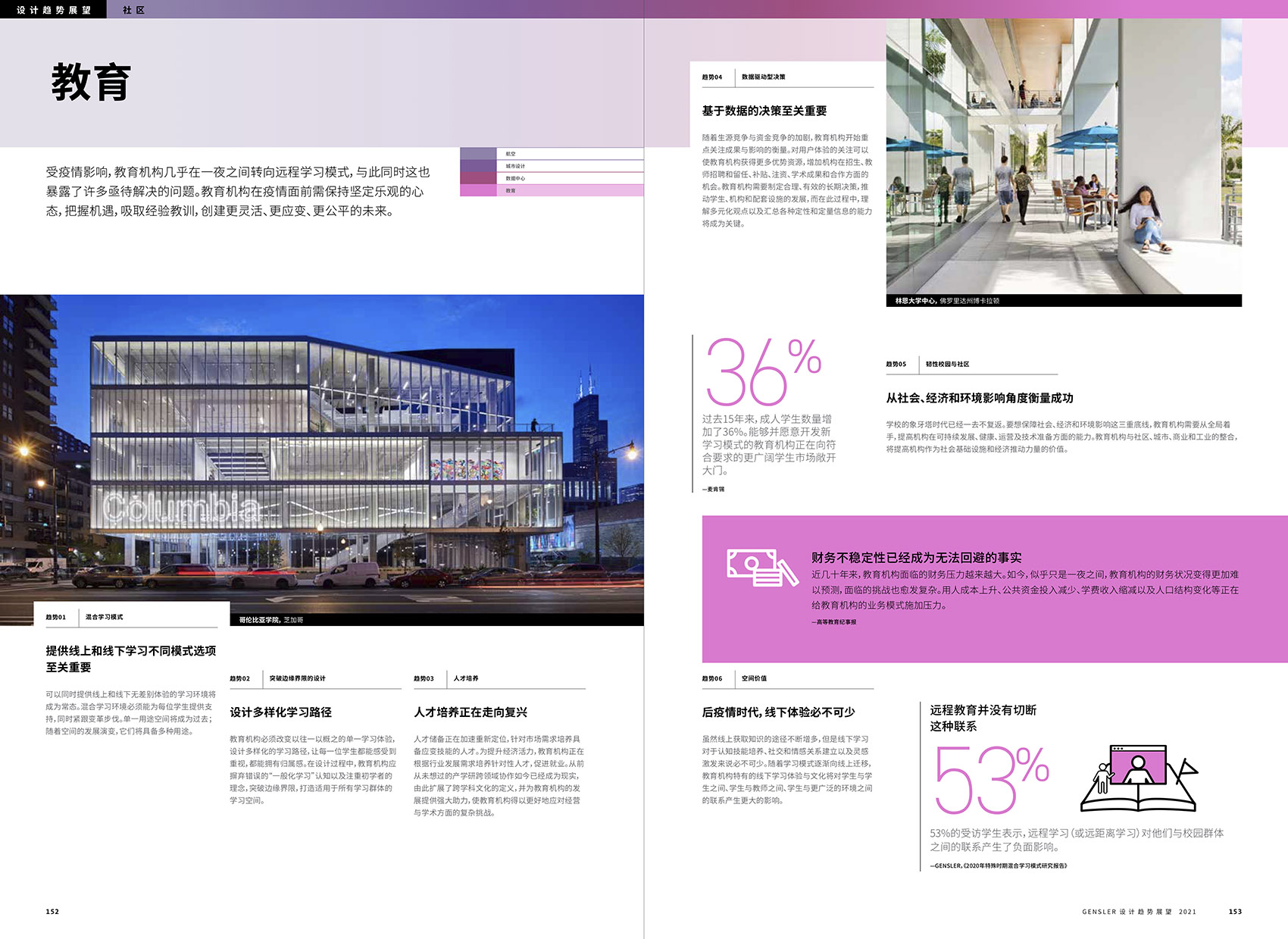
Sources: https://www.gooood.cn/gensler-design-forecast-2021.htm
Post time: Jun-11-2021
